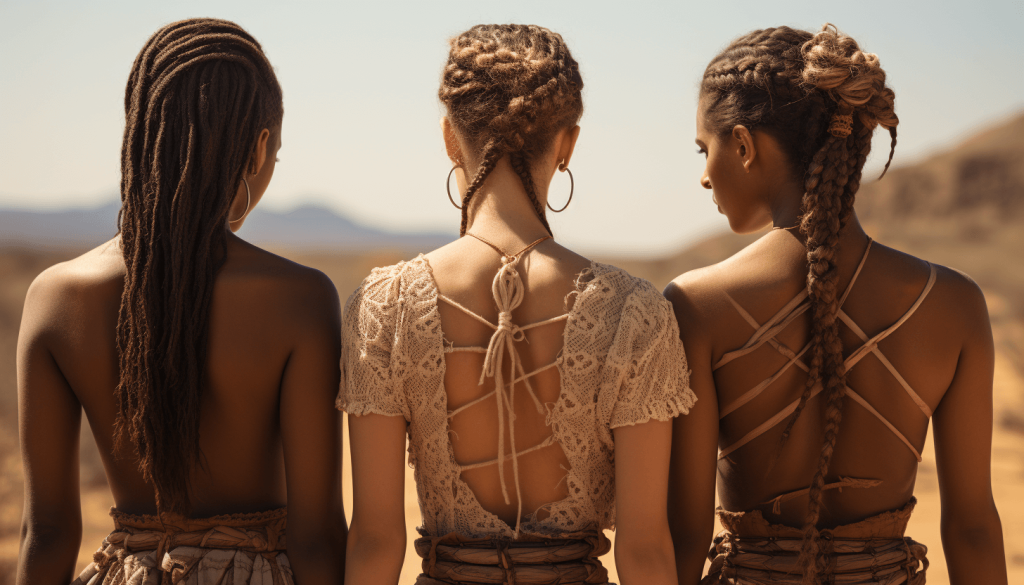Introduction
From ancient civilizations to contemporary fashion runways, braids have made a significant mark in the world of hairstyles. They have been used not only as a means to manage and beautify hair but also to signify various cultural, social, and historic backgrounds. Each braid type carries its own story, intricacy level, and distinct look. In this article, we’ll delve deep into the diverse world of braids, exploring their origins, their place in cultures, and the techniques behind each braid.
1. Classic Three-Strand Braid
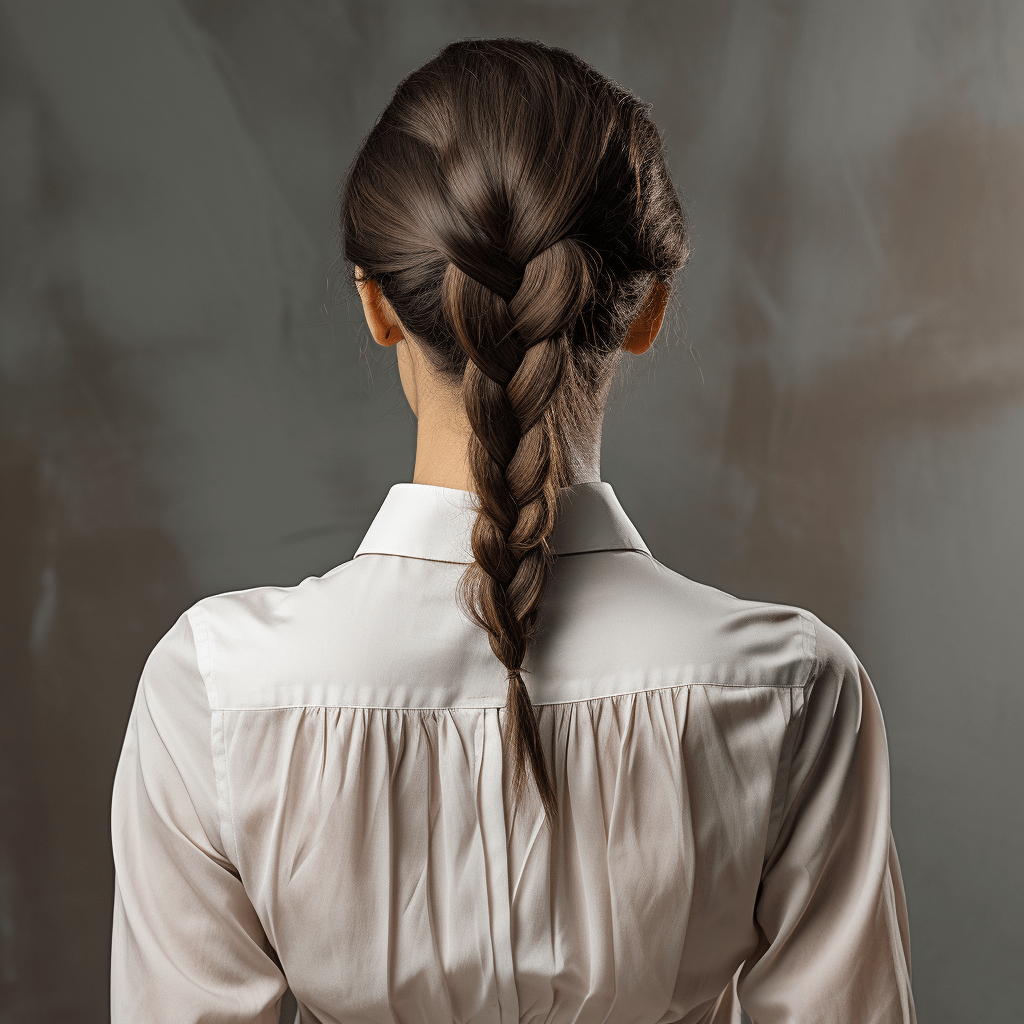
Origin & History: The Classic Three-Strand Braid is perhaps the most ancient and universal form of braiding. Early evidence of this braid has been found in almost every culture, from ancient China to Native America.
Popularity: Due to its simplicity and elegance, it remains a favorite worldwide, suitable for daily wear or even special occasions.
Culture: This braid doesn’t belong to a particular culture but can be seen universally, transcending geographic boundaries.
Difficulty Level: Being the most basic form, it’s the easiest to create and often serves as the starting point for beginners.
2. French Braid
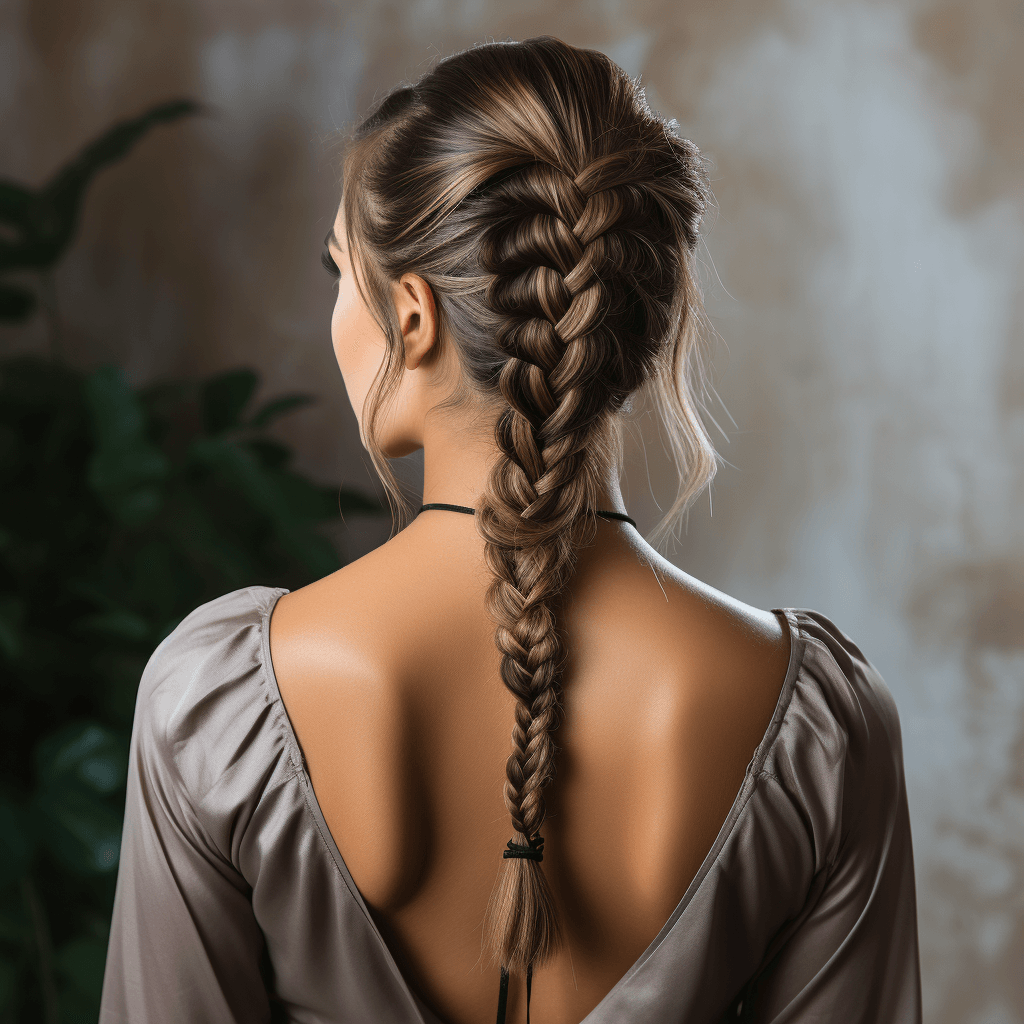
Origin & History: Despite its name, the French Braid’s origins are a bit ambiguous. Some say it dates back to ancient African art while others argue its emergence from the Celtic period.
Popularity: Immensely popular worldwide, its neat and tidy appearance makes it suitable for both casual and formal settings.
Culture: It became widely recognized in France, hence the name, but its variations can be found in many cultures.
Difficulty Level: Requires some practice, especially to ensure even tension throughout, but can be mastered with time.
3. Dutch Braid
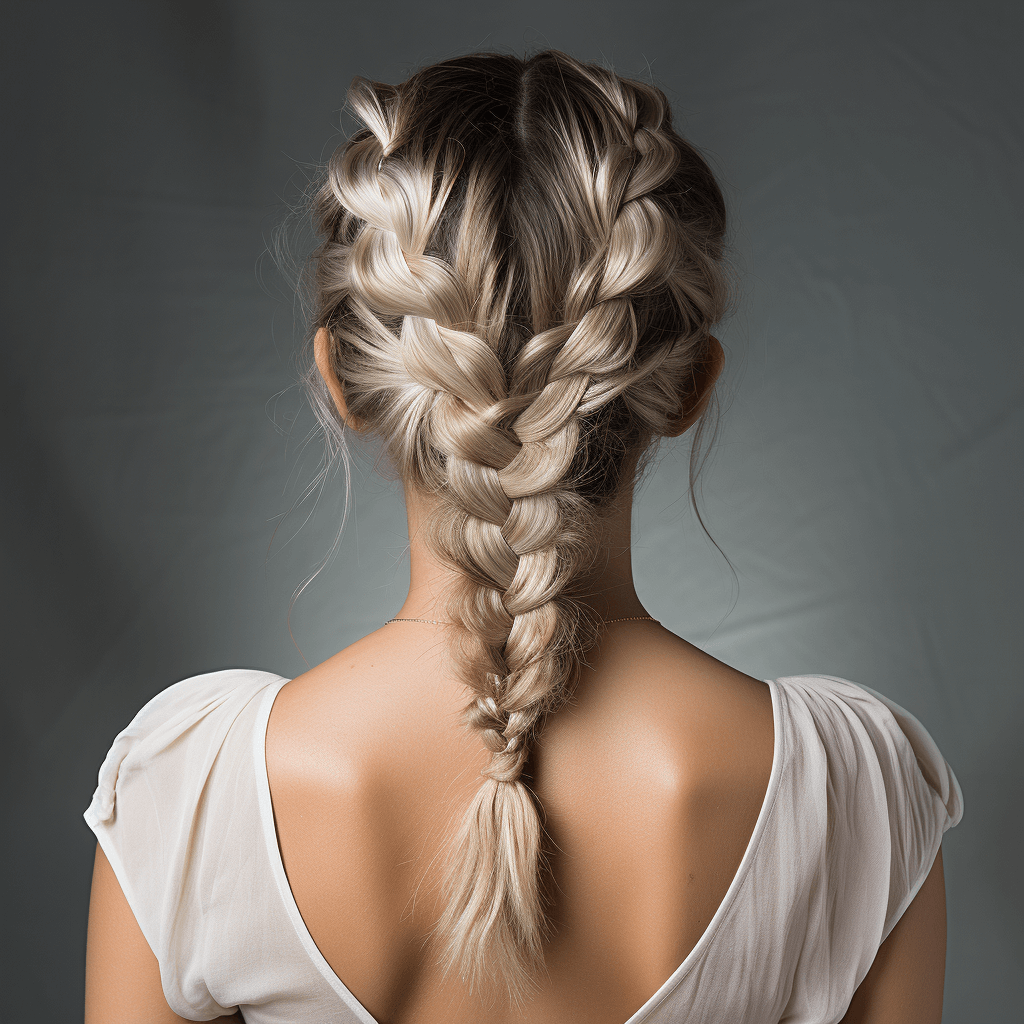
Origin & History: The Dutch Braid is essentially the inverse of the French Braid. Its origins aren’t firmly Dutch but the name has stuck.
Popularity: Known for its dimensional, raised appearance, it’s popular among those who wish for a bolder look.
Culture: It’s universally embraced but can be found prominently in European cultures.
Difficulty Level: Similar to the French Braid but requires flipping the technique.
4. Fishtail Braid
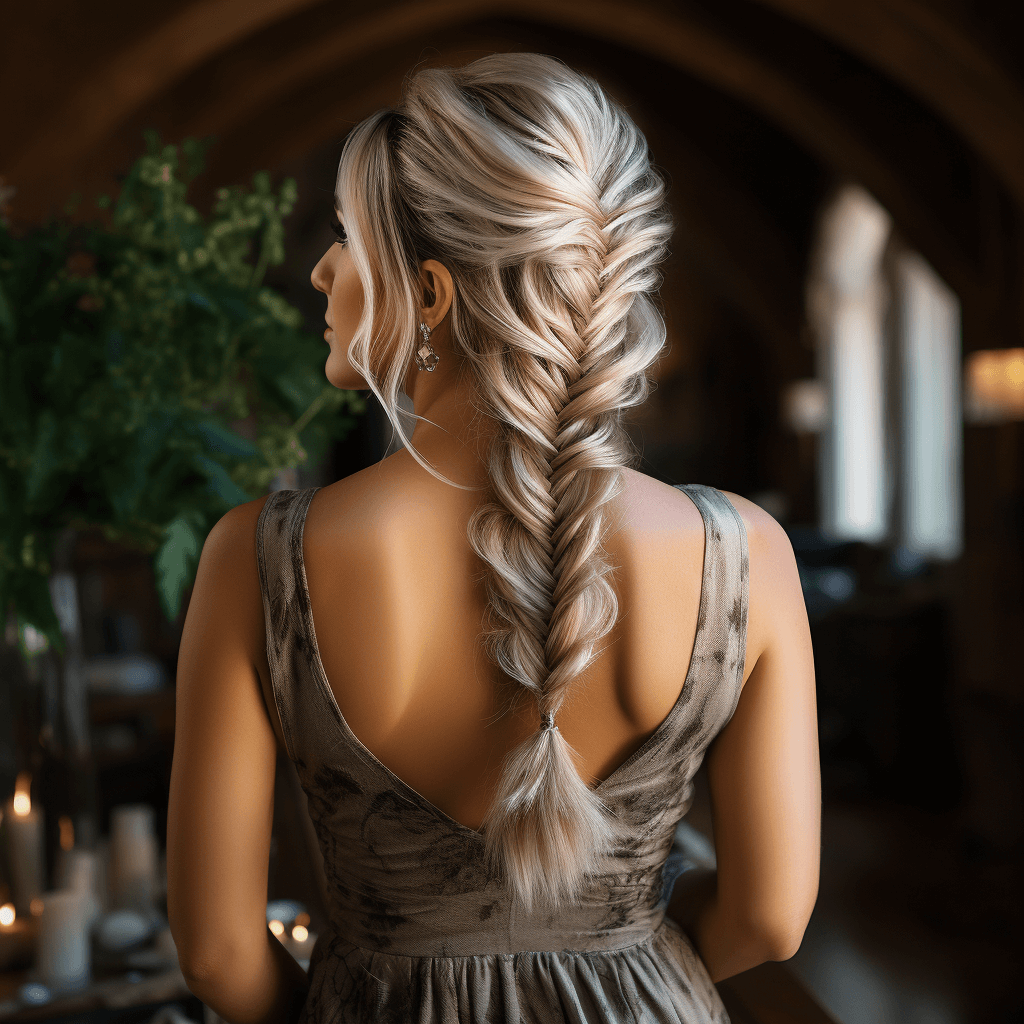
Origin & History: The Fishtail’s exact origins are unclear, but its design resembles the bones of a fish, leading to its name.
Popularity: Adored for its intricate appearance, it’s often chosen for special events or occasions.
Culture: While its origin is debated, today, it’s universally loved, particularly popular in fashion circles.
Difficulty Level: It might look complex, but with some patience, it’s quite achievable, even for those new to braiding.
5. Waterfall Braid
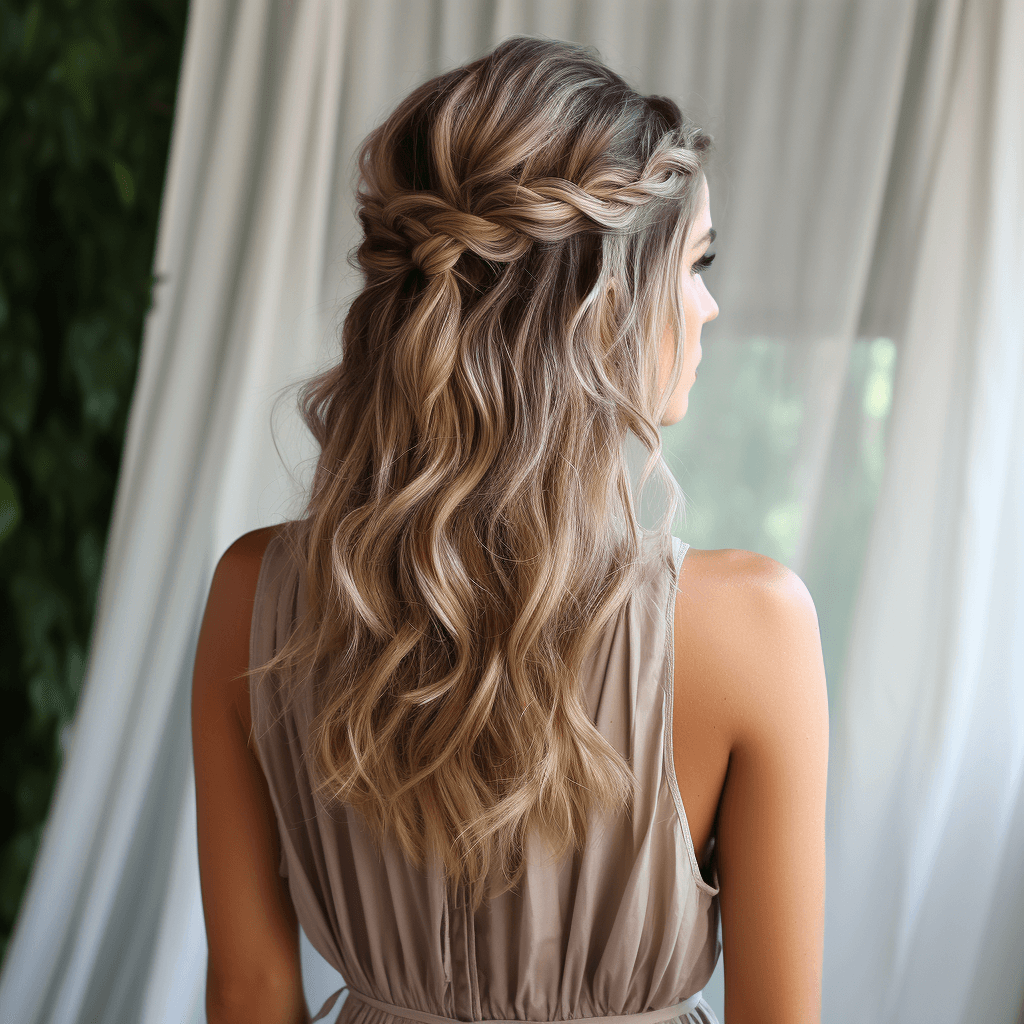
Origin & History: The Waterfall Braid is a relatively modern invention, popularized with the advent of the internet and social media platforms dedicated to hairstyling.
Popularity: With its cascading, intricate design, the Waterfall Braid has become a go-to for those seeking a romantic or whimsical hairstyle for events.
Culture: This braid doesn’t have strong cultural ties but is primarily associated with Western fashion trends.
Difficulty Level: It’s a bit tricky, especially for beginners, but achievable with practice, as it combines the styles of traditional and French braiding.
6. Crown Braid
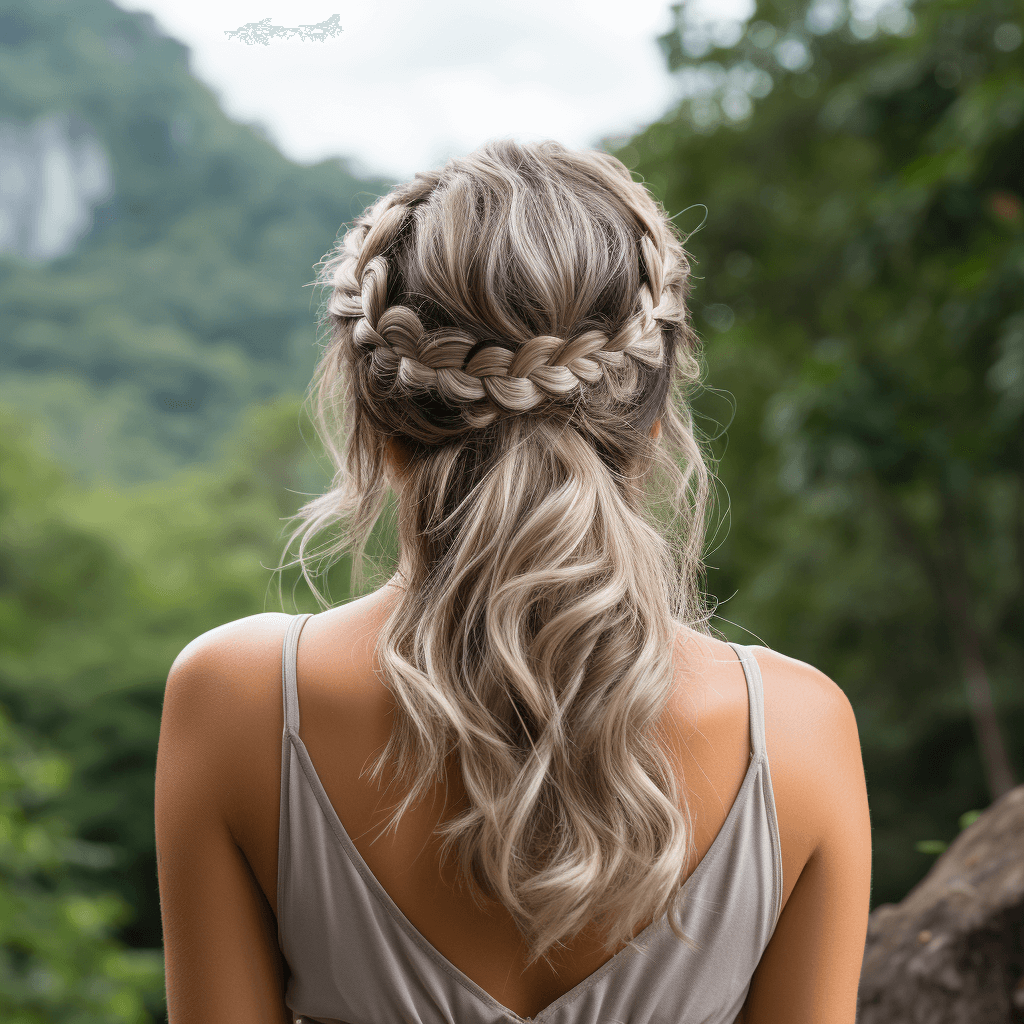
Origin & History: Crown braids have been traced back to ancient civilizations, such as the Greeks and Romans, where they were sported by noble women.
Popularity: Serving a dual purpose of fashion and function, Crown Braids are chosen by many for their regal appearance and ability to keep hair off the face.
Culture: Beyond ancient civilizations, variations of the crown braid can be seen across various cultures, signifying elegance and nobility.
Difficulty Level: Intermediate to advanced. Wrapping the braid around the head can require assistance or a lot of practice for solo styling.
7. Rope Twist Braid
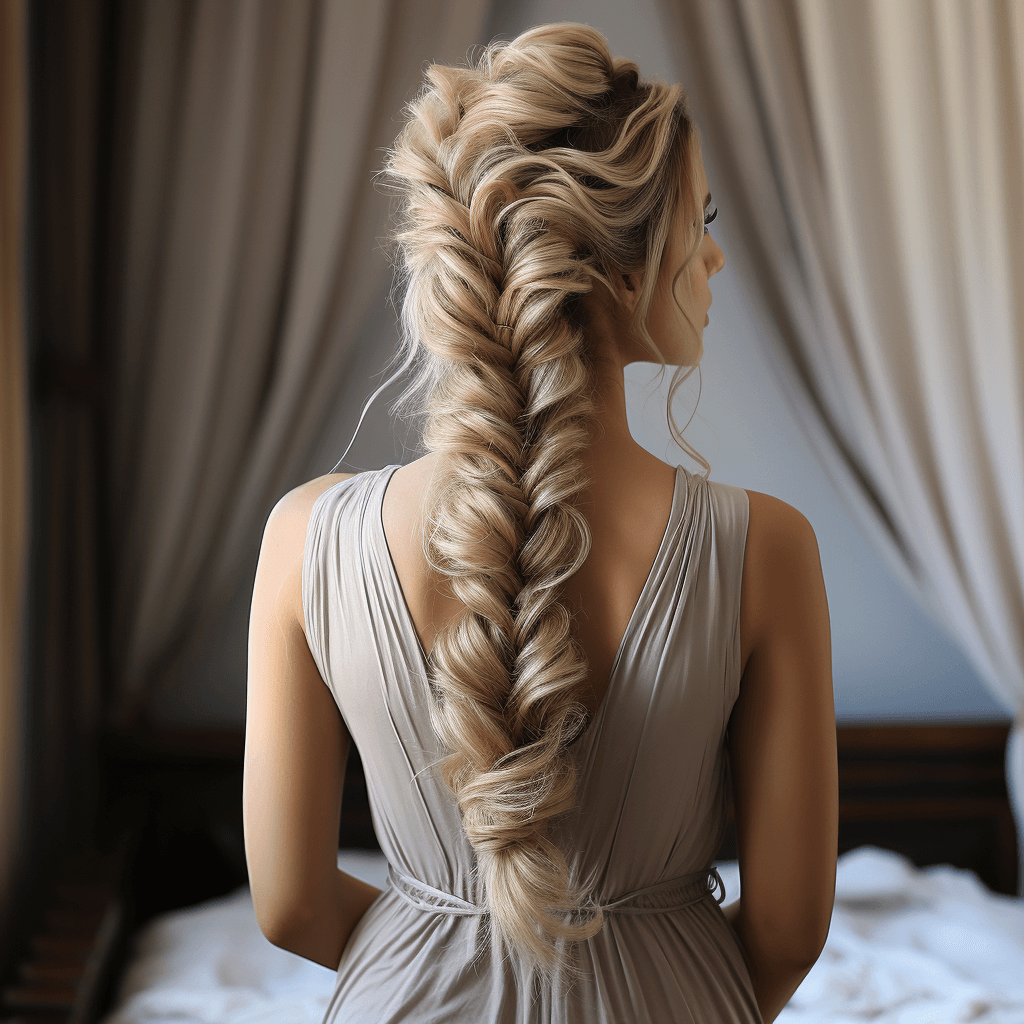
Origin & History: While the exact origins of the Rope Twist Braid are unclear, it’s a style that has been adopted by numerous cultures.
Popularity: Due to its simplicity and chic look, it’s widely loved for both casual and formal events.
Culture: From African communities to European circles, the Rope Twist Braid is universally accepted.
Difficulty Level: Quite easy. It requires twisting two sections of hair around one another, making it simple yet effective.
8. Pull-Through Braid
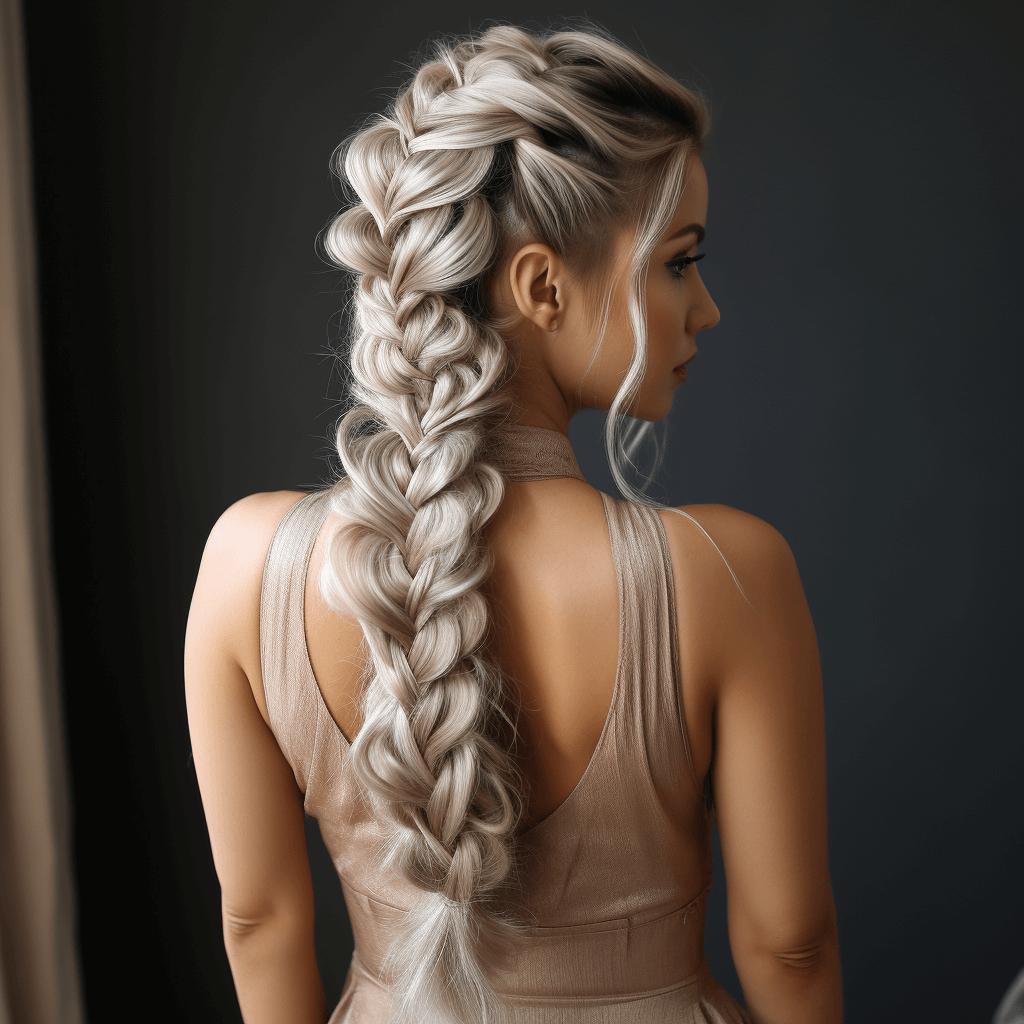
Origin & History: The Pull-Through Braid is another modern innovation, which has gained traction through hairstyling tutorials and platforms.
Popularity: Chosen for its voluminous and intricate appearance, it’s a favorite for special occasions.
Culture: Predominantly seen in Western fashion trends, its origin doesn’t tie to any specific culture.
Difficulty Level: Moderate. It’s not a traditional ‘braid’, but involves looping and pulling hair through ponytail sections.
9. Milkmaid Braid
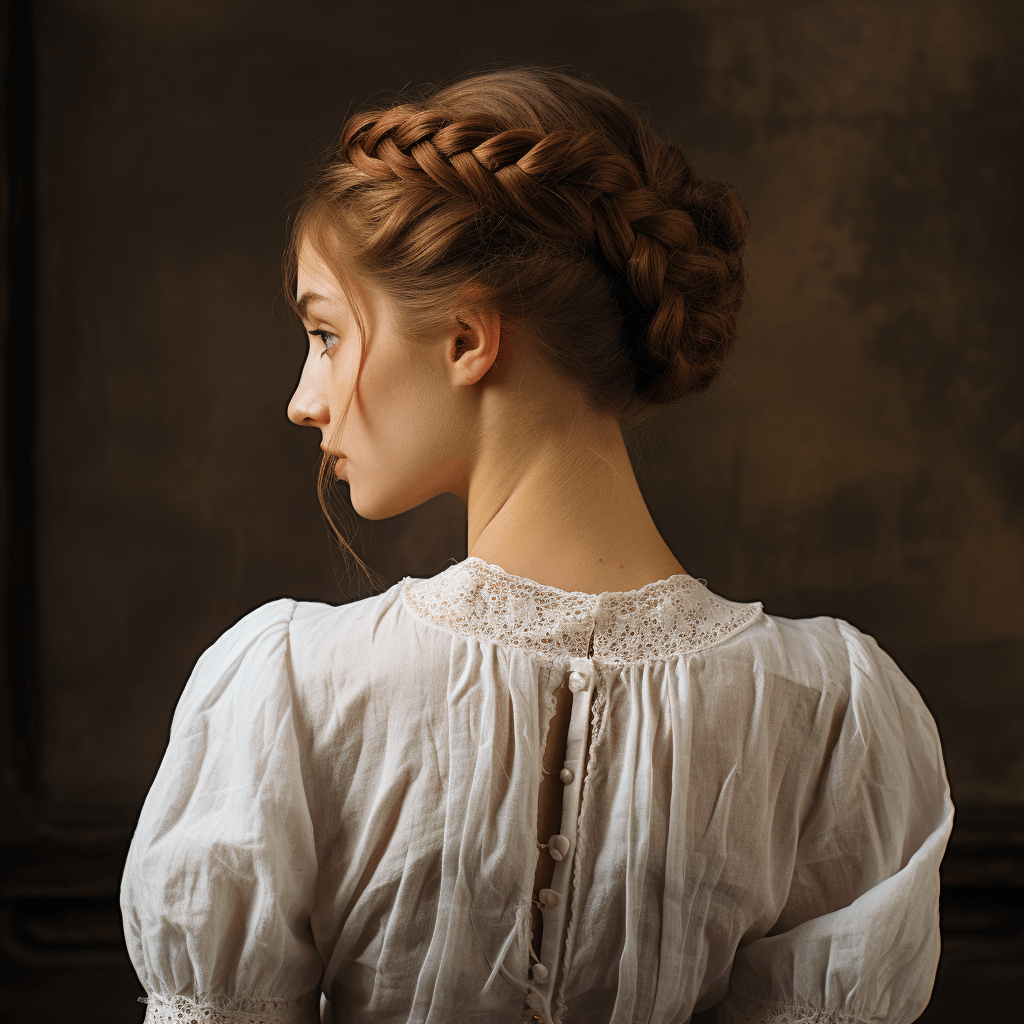
Origin & History: Rooted in European history, Milkmaid Braids were originally worn by women working in fields, mainly because they kept hair off the face and neck.
Popularity: Today, the Milkmaid Braid is often seen at festivals, weddings, and other events due to its bohemian and romantic appeal.
Culture: While it originated in Europe, this style has become popular worldwide, transcending its initial cultural boundary.
Difficulty Level: Moderate. It requires creating two braids and pinning them atop the head.
10. Four Strand Braid
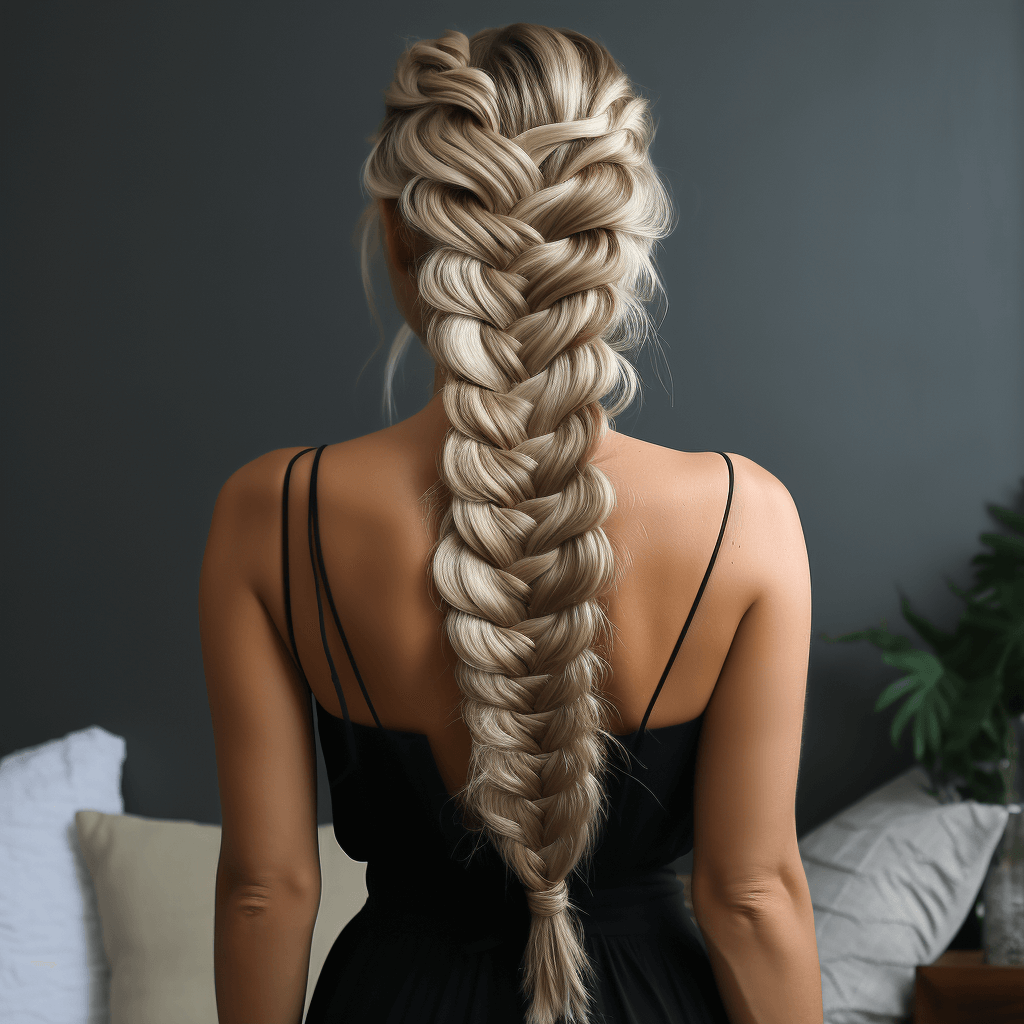
Origin & History: The Four Strand Braid doesn’t have a specific point of origin, but the technique is an evolution from the basic three-strand method.
Popularity: Due to its unique and intricate design, it’s become a favorite for those wanting to elevate their braiding game.
Culture: This braid is universal, with no specific cultural ties, but is often seen in contemporary hair fashion.
Difficulty Level: Intermediate. It demands a bit more coordination than the three-strand braid.
11. Five Strand Braid
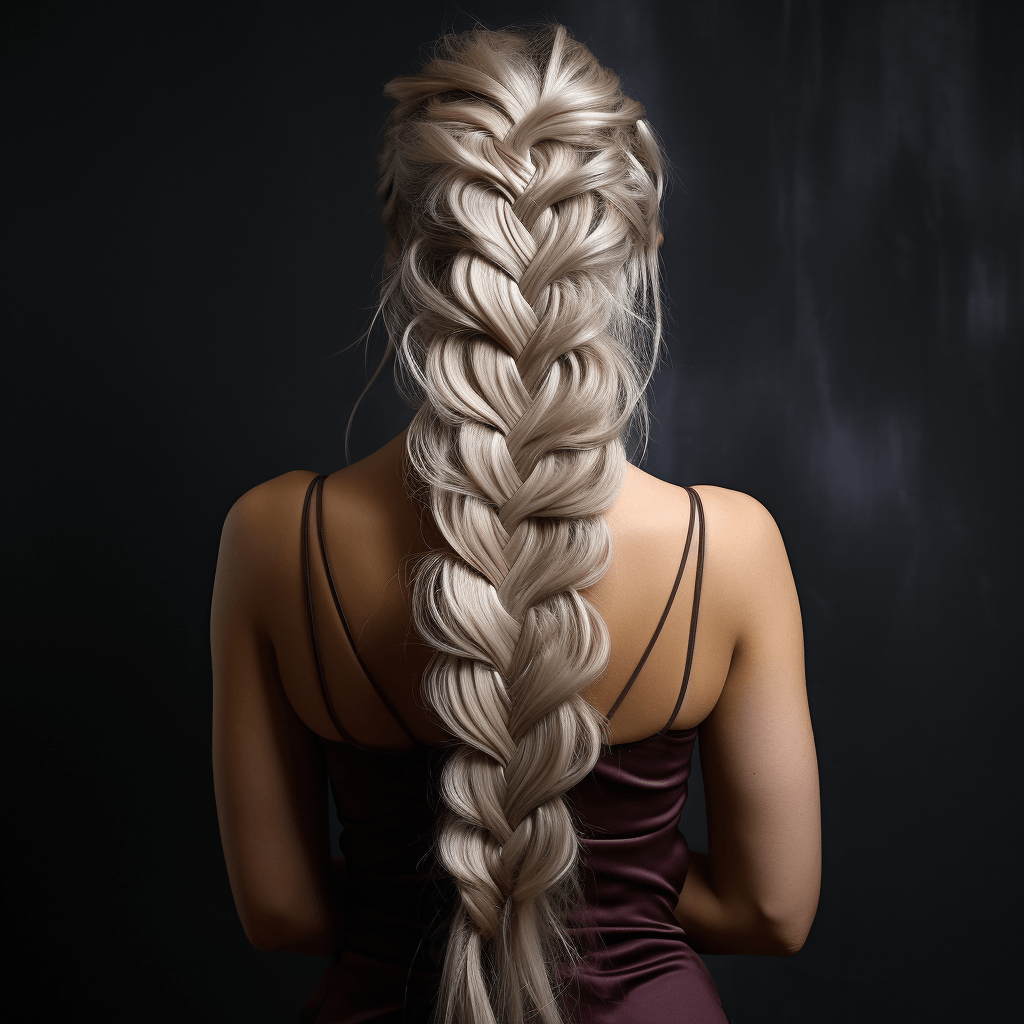
Origin & History: Much like its four-strand counterpart, the Five Strand Braid is an evolved version of traditional braiding techniques.
Popularity: It’s adored by those who love complex braiding styles and often features in hairstyling competitions.
Culture: Being a relatively modern technique, the Five Strand Braid has universal appeal without cultural specifications.
Difficulty Level: Advanced. It requires good dexterity and practice to master.
12. Ladder Braid
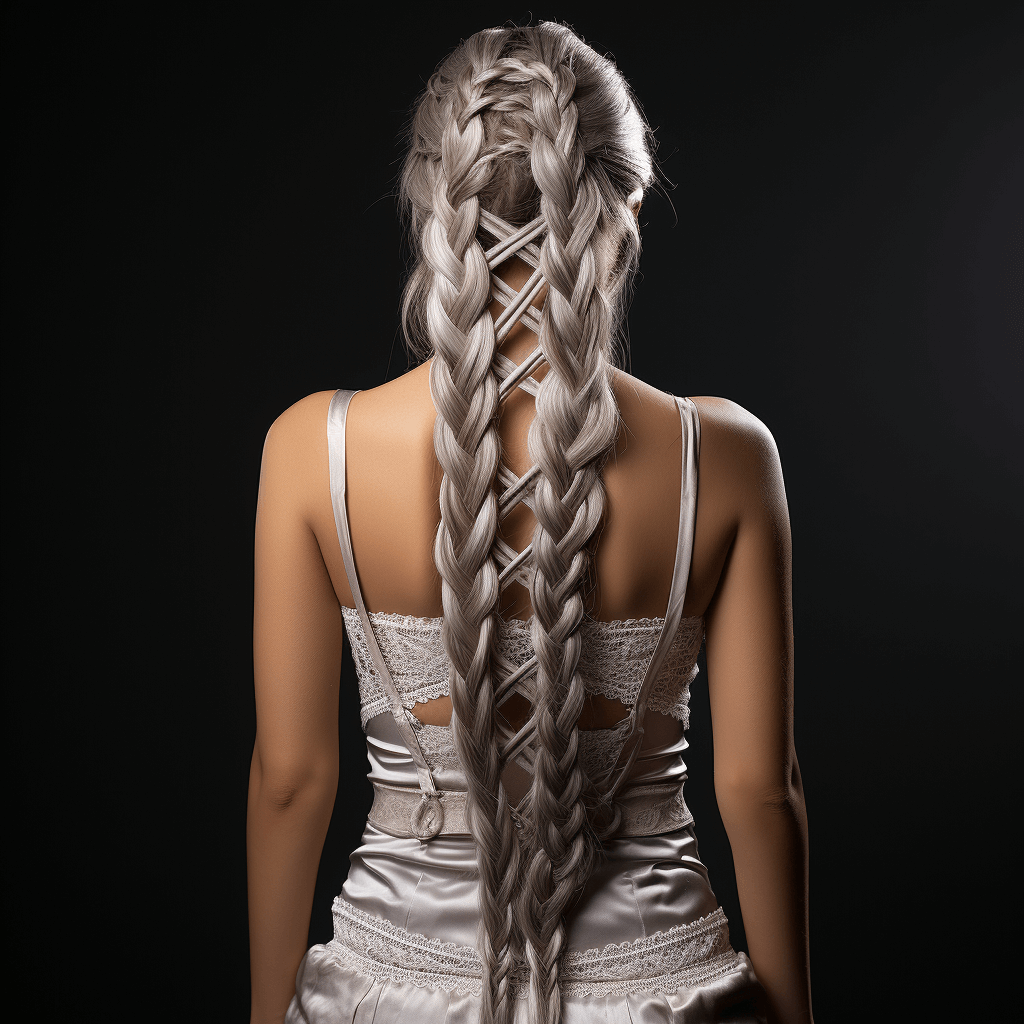
Origin & History: The Ladder Braid is a fusion style, combining elements of French braiding with standard braids.
Popularity: Its unique appearance, reminiscent of a ladder, has made it a trendy choice for hairstyling enthusiasts.
Culture: Without strong cultural ties, this braid is more about modern hairstyling innovation.
Difficulty Level: Advanced. Crafting the ladder effect demands precision and patience.
13. Box Braids
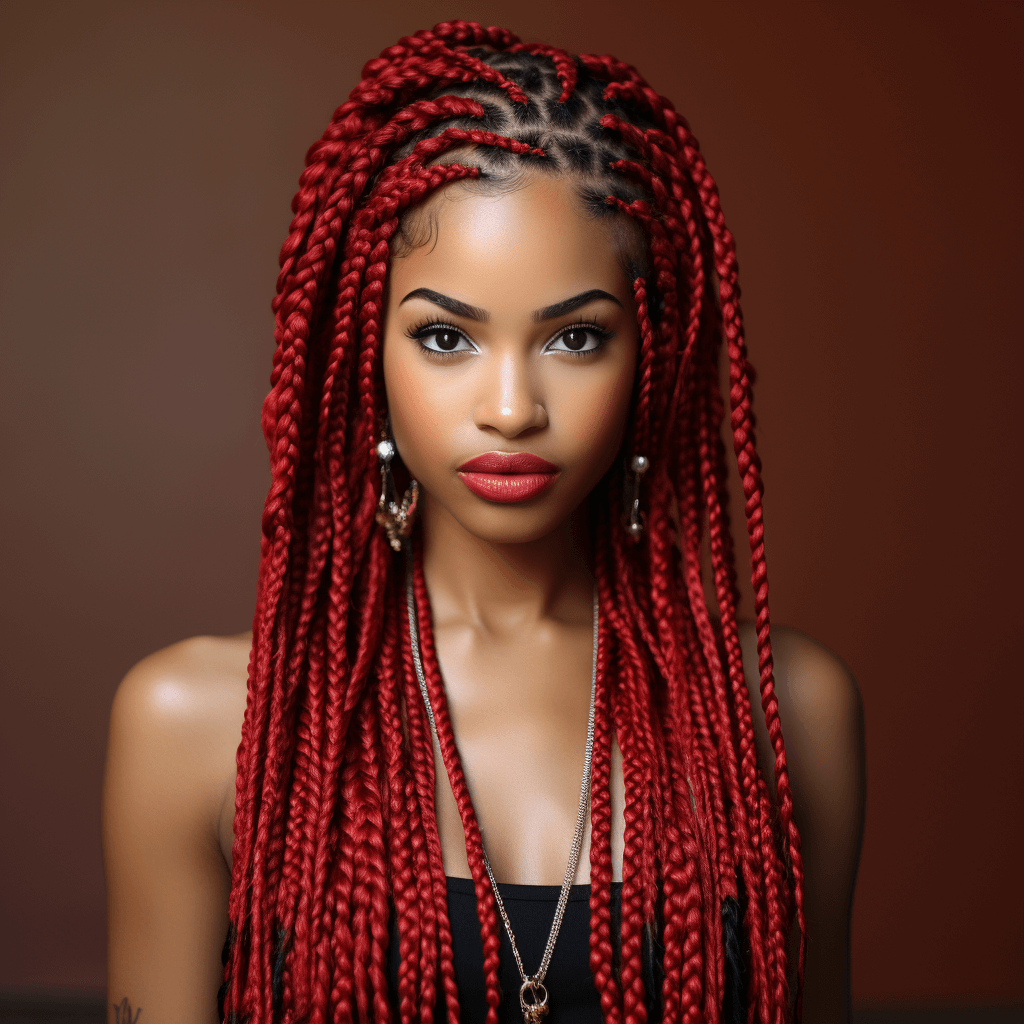
Origin & History: Box braids have their roots in Africa, going back thousands of years. They have been a significant part of African hair culture, representing various societal statuses, religions, and more.
Popularity: They gained significant traction in the West during the ’90s and have remained popular due to their versatility and protective nature.
Culture: Historically linked with African culture, Box Braids have become a global phenomenon, recognized and embraced by many outside their origin.
Difficulty Level: Intermediate to Advanced. The process can be time-consuming, especially on longer hair.
14. Cornrows
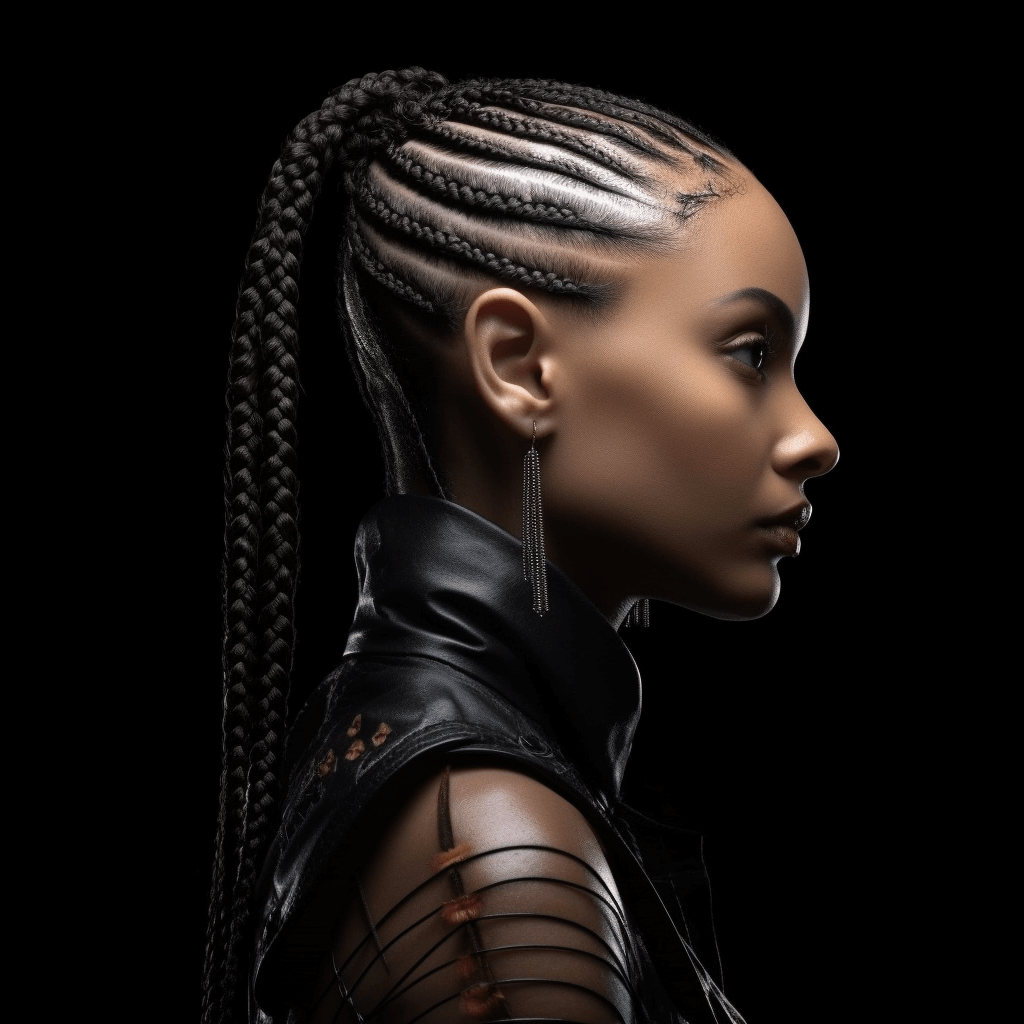
Origin & History: Cornrows have a rich history in Africa, dating back to 3000 B.C. The intricate patterns could indicate various things, from age and social status to tribe and family roles.
Popularity: They gained mainstream attention in the Western world in the 1960s and 1970s, becoming both a style and a political statement.
Culture: While deeply rooted in African culture, cornrows have been adopted globally but not without discussions on cultural appropriation.
Difficulty Level: Intermediate. The process requires tight braiding close to the scalp.
15. Micro Braids
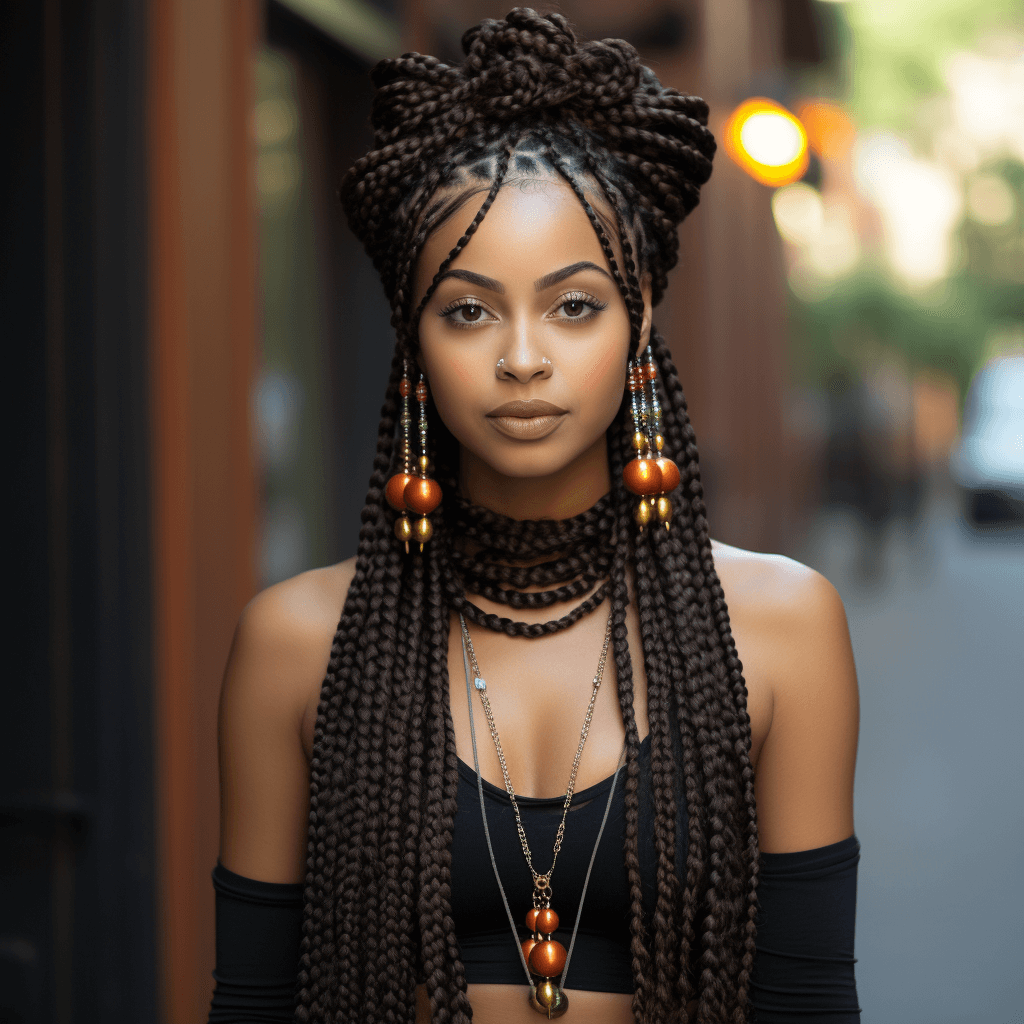
Origin & History: Like many braided styles, Micro Braids originate from Africa. These tiny braids have been a preferred style for their protective properties and versatility.
Popularity: They became particularly popular in the late ’90s and early 2000s, especially among celebrities.
Culture: Rooted in African tradition, they’ve since become a global hairstyle choice, especially for those with curly or kinky hair textures.
Difficulty Level: Advanced. Given their small size, they can be very time-consuming to install and require a lot of patience.
16. Halo Braid
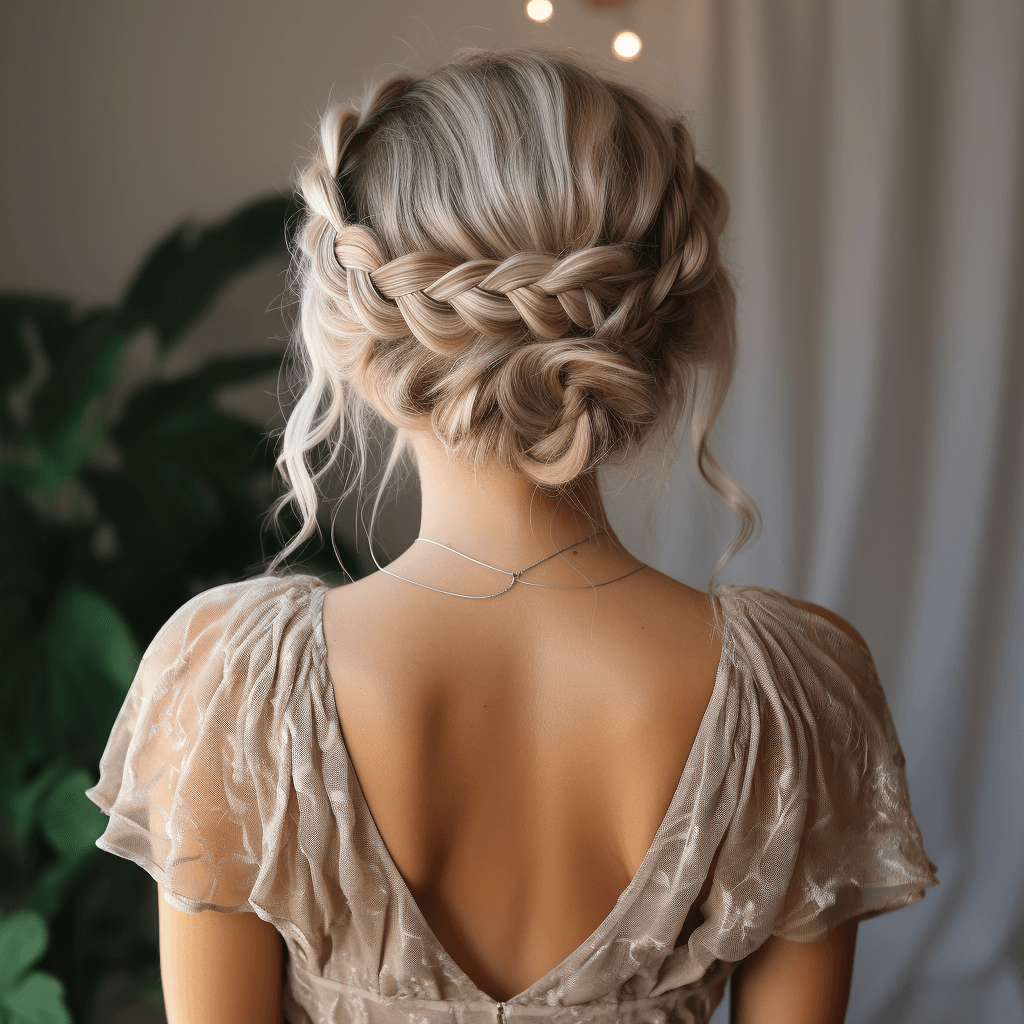
Origin & History: The Halo Braid, also known as the crown braid, is believed to have European origins, especially among peasants and working women who needed to keep their hair away from their faces.
Popularity: It’s a classic style that has seen a resurgence in recent years, often spotted at formal events like weddings.
Culture: With no strong ties to a particular culture, the Halo Braid transcends borders, embodying elegance and simplicity.
Difficulty Level: Intermediate. While it’s essentially a two-strand twist or a three-strand braid, the technique of wrapping it around the head can be a bit tricky.
17. Lattice Braid
Origin & History: The exact origins of the Lattice Braid are unclear, but its intricate, net-like appearance resembles ancient weaving techniques found in multiple cultures.
Popularity: It’s not as mainstream as some other braids, but its unique look has made it a favorite for special occasions or hair competitions.
Culture: Its resemblance to weaving patterns means it could have various cultural roots, but it’s globally appreciated for its artistry.
Difficulty Level: Advanced. Creating the lattice effect requires careful planning and precision.
18. Herringbone Braid
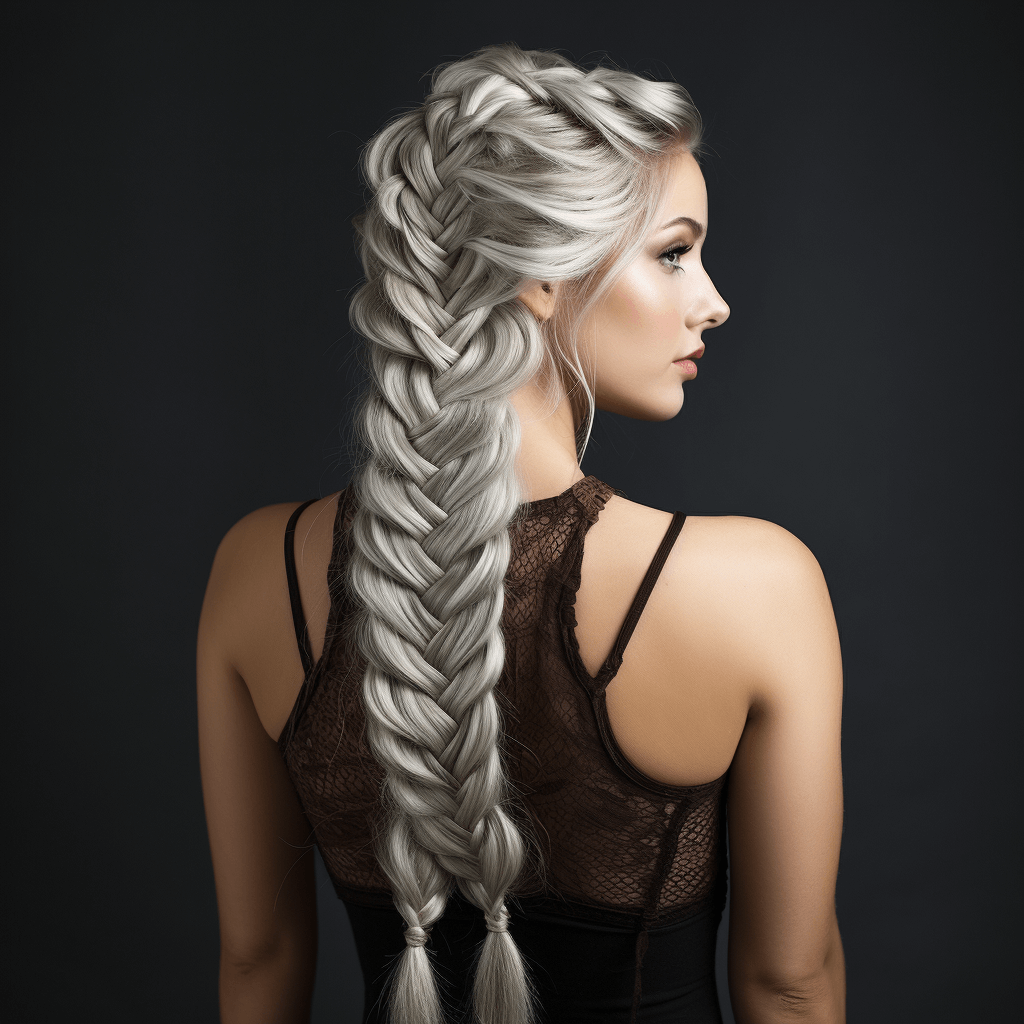
Origin & History: Also known as the fishtail braid, the Herringbone Braid has ancient roots, with evidence of its existence in Greek, Egyptian, and various Asian cultures.
Popularity: Its timeless elegance keeps it in vogue, especially for events like proms or weddings.
Culture: Given its widespread historical presence, the herringbone braid is a testament to how different cultures converge in hairstyling.
Difficulty Level: Intermediate. The style can be achieved with practice, but creating a neat fishtail requires patience.
19. Butterfly Braid
Origin & History: The Butterfly Braid, a variation of the box braid, is a relatively newer style, making its presence felt primarily in the African and African-American hair communities.
Popularity: Gaining traction in recent years, it’s celebrated for its standout appearance.
Culture: Deeply rooted in African hair artistry, the Butterfly Braid is a favorite for its protective and aesthetic appeal.
Difficulty Level: Intermediate. While based on box braids, the added butterfly effect requires additional skill.
20. Snake Braid
Origin & History: The Snake Braid, known for its wavy pattern, doesn’t have a clear-cut origin but is a modern twist on traditional braiding techniques.
Popularity: It’s a fun and unique way to elevate a simple braid, making it popular among younger generations.
Culture: It’s a contemporary style, detached from specific cultural roots but embraced by a global audience.
Difficulty Level: Intermediate. Creating the snake effect requires a bit of dexterity but can be mastered with practice.
21. Mermaid Braid
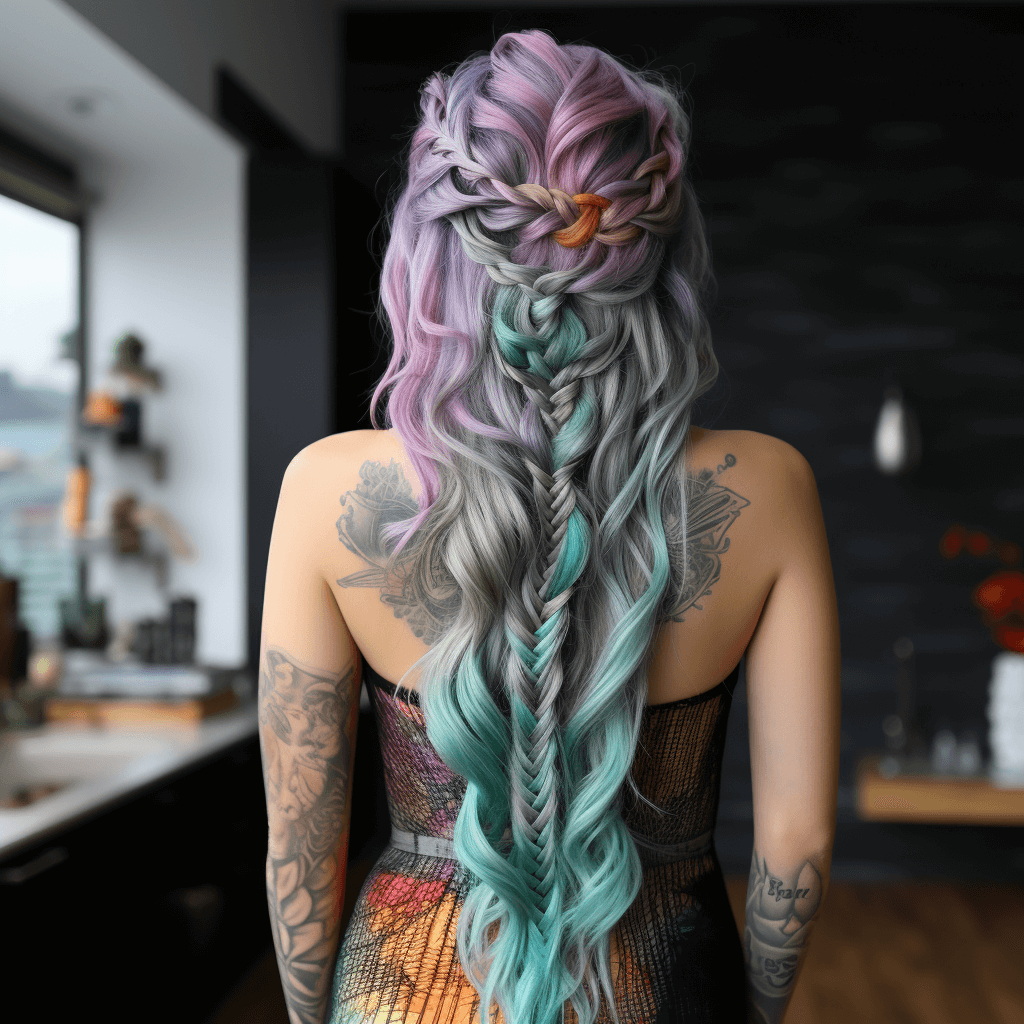
Origin & History: The Mermaid Braid, as the name suggests, draws inspiration from mythical mermaids’ flowing, wavy hair. It’s a contemporary style, originating in the West.
Popularity: Its ethereal and dreamy appearance has made it popular for beach weddings, summer festivals, and bohemian-themed events.
Culture: The Mermaid Braid is largely a Western style but has gained global popularity thanks to social media and hair tutorials.
Difficulty Level: Intermediate to Advanced. Incorporating the cascading effect into the braid requires some skill.
22. Lace Braid
Origin & History: The Lace Braid is a variation of the French braid, where hair is added from one side only. Its exact origins are hard to pinpoint, but it can be seen as an evolution of older braiding techniques.
Popularity: It’s a versatile style that can be used to frame the face or create half-up, half-down looks. Its adaptability makes it a favorite among hair enthusiasts.
Culture: While it evolved from traditional braiding methods, the Lace Braid doesn’t have strong ties to any specific culture.
Difficulty Level: Intermediate. If you can French braid, a bit more practice can help you master the Lace Braid.
23. Grecian Braid
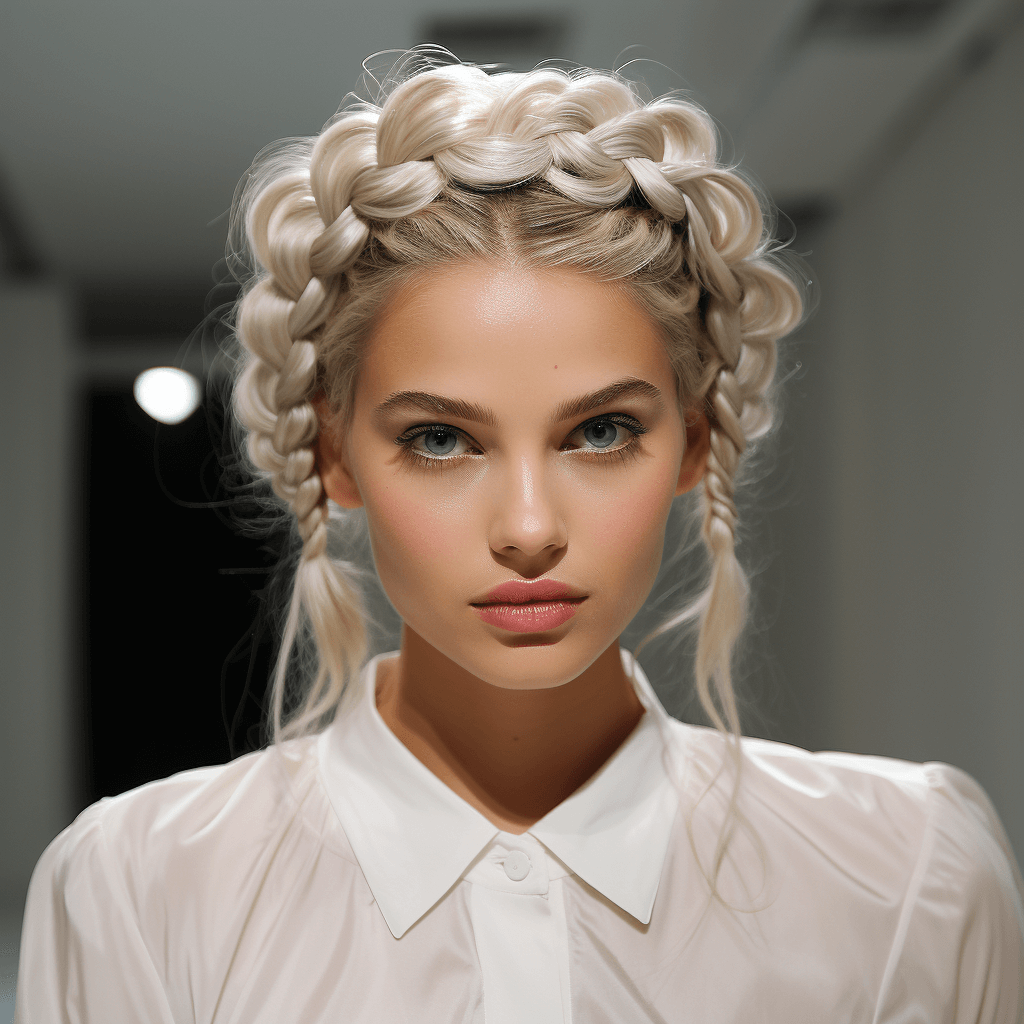
Origin & History: As the name suggests, the Grecian Braid is inspired by ancient Greek hairstyles, especially those depicted in art and sculptures from that era.
Popularity: The Grecian Braid remains popular for formal occasions like weddings, proms, and themed parties.
Culture: This braid has a strong connection to ancient Greece, symbolizing elegance and grace.
Difficulty Level: Intermediate. Creating the crown-like structure requires practice but is achievable.
24. Heart Braid
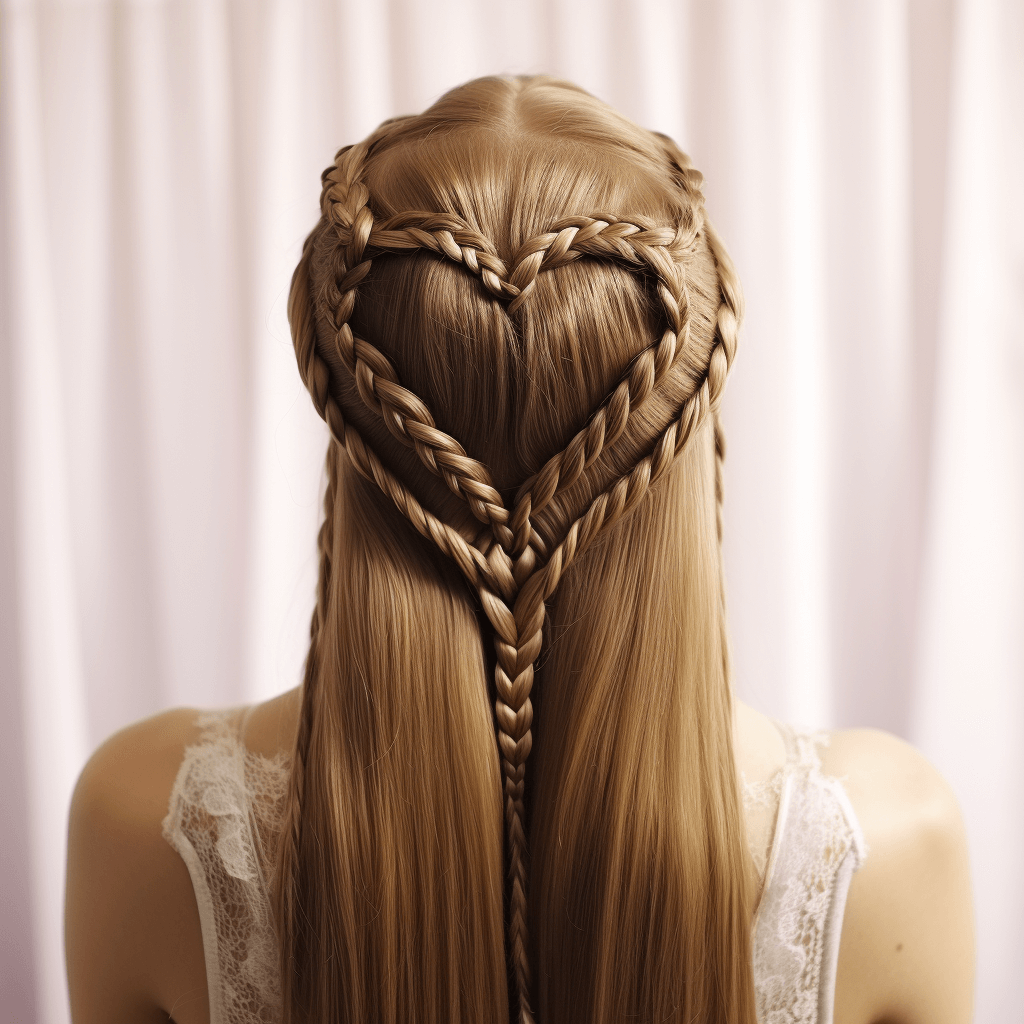
Origin & History: The Heart Braid is a modern invention, popularized by social media and hair stylists who continually experiment with braiding techniques.
Popularity: A favorite for Valentine’s Day, anniversaries, or any romantic occasion, its charm is undeniable.
Culture: It’s a global style, with its universal symbol of love resonating across cultures.
Difficulty Level: Advanced. Crafting the perfect heart shape with braids requires precision and patience.
25. Dragon Braid
Origin & History: The Dragon Braid is a modern and edgy twist on traditional braids. Its name suggests fierceness and intricacy, similar to the mythical creature it’s named after.
Popularity: It has grown in popularity among those looking for a more avant-garde braiding style, especially after its introduction on social media platforms.
Culture: The Dragon Braid isn’t tied to any specific culture but is a testament to the creativity of contemporary hair stylists and enthusiasts.
Difficulty Level: Advanced. It’s a combination of various braiding techniques, which require a good grasp to achieve the desired look.
26. Carousel Braid
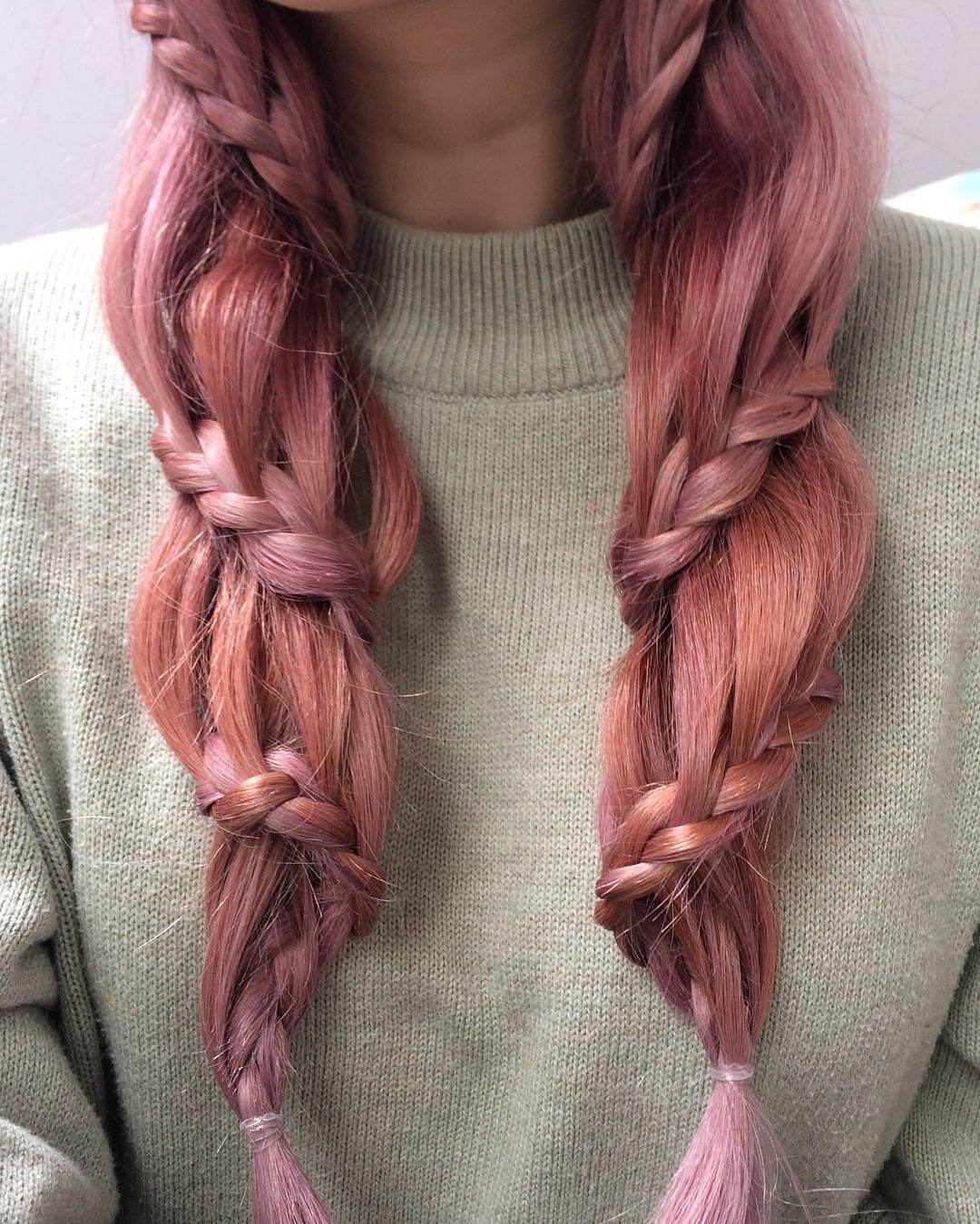
Origin & History: A relatively new invention, the Carousel Braid spirals around the head, much like a carousel ride. It’s a playful and chic evolution of traditional braids.
Popularity: The Carousel Braid is popular for events like festivals, beach outings, or any casual outing where a fun hairstyle is desired.
Culture: Largely a Western innovation, its popularity has now spread globally through hair tutorials and social media.
Difficulty Level: Intermediate to Advanced. The wrap-around style can be a bit tricky to master.
27. Caged Braid
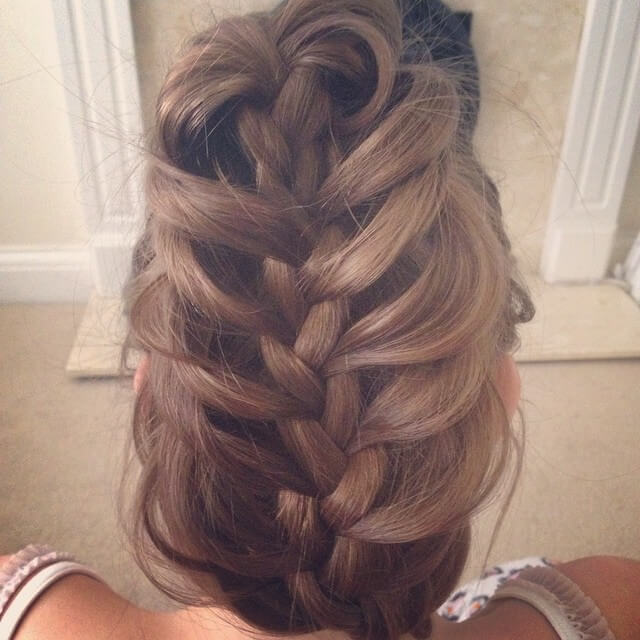
Origin & History: The Caged Braid is another modern interpretation of braiding, where a braid is ‘caged’ within another. It’s a more intricate design that showcases the versatility of braids.
Popularity: Preferred by those looking for an intricate yet elegant hairstyle, it’s often chosen for special events and parties.
Culture: The Caged Braid doesn’t have cultural ties but is rather an example of contemporary hairdressing creativity.
Difficulty Level: Advanced. Achieving the ‘caged’ effect requires precision.
28. Infinity Braid
Origin & History: Drawing its name from the infinity symbol, this braid gives the illusion of an endless loop. It’s a newer style that has captured the imagination of many.
Popularity: Given its symbolic representation of ‘forever’, it’s a popular choice for weddings and romantic occasions.
Culture: As a modern braiding style, it doesn’t have historical or cultural ties but resonates with a universal symbol.
Difficulty Level: Advanced. Crafting the infinity symbol with hair is challenging but rewarding.
29. Zig Zag Braid
Origin & History: The Zig Zag Braid, as the name suggests, takes on a zigzagging pattern, adding a playful twist to traditional braiding styles.
Popularity: Perfect for those who want a braid that stands out, the Zig Zag Braid is often seen on fashion runways and artistic hair shows.
Culture: This style doesn’t have particular cultural origins but is an experimental twist on the classic braid.
Difficulty Level: Intermediate to Advanced. It requires careful sectioning and pattern-following to achieve the desired zigzag effect.
30. Spiral Braid
Origin & History: The Spiral Braid is a modern and elegant twist on conventional braiding, creating a swirling pattern that captures the eye.
Popularity: A favorite for both casual and special occasions, the Spiral Braid has seen its share of spotlight moments on social media hair tutorials.
Culture: With no direct cultural ties, the Spiral Braid is a global favorite, emphasizing the beauty of intertwining strands.
Difficulty Level: Advanced. Crafting the spiral effect demands skill and patience.
31. Pancaked Braid
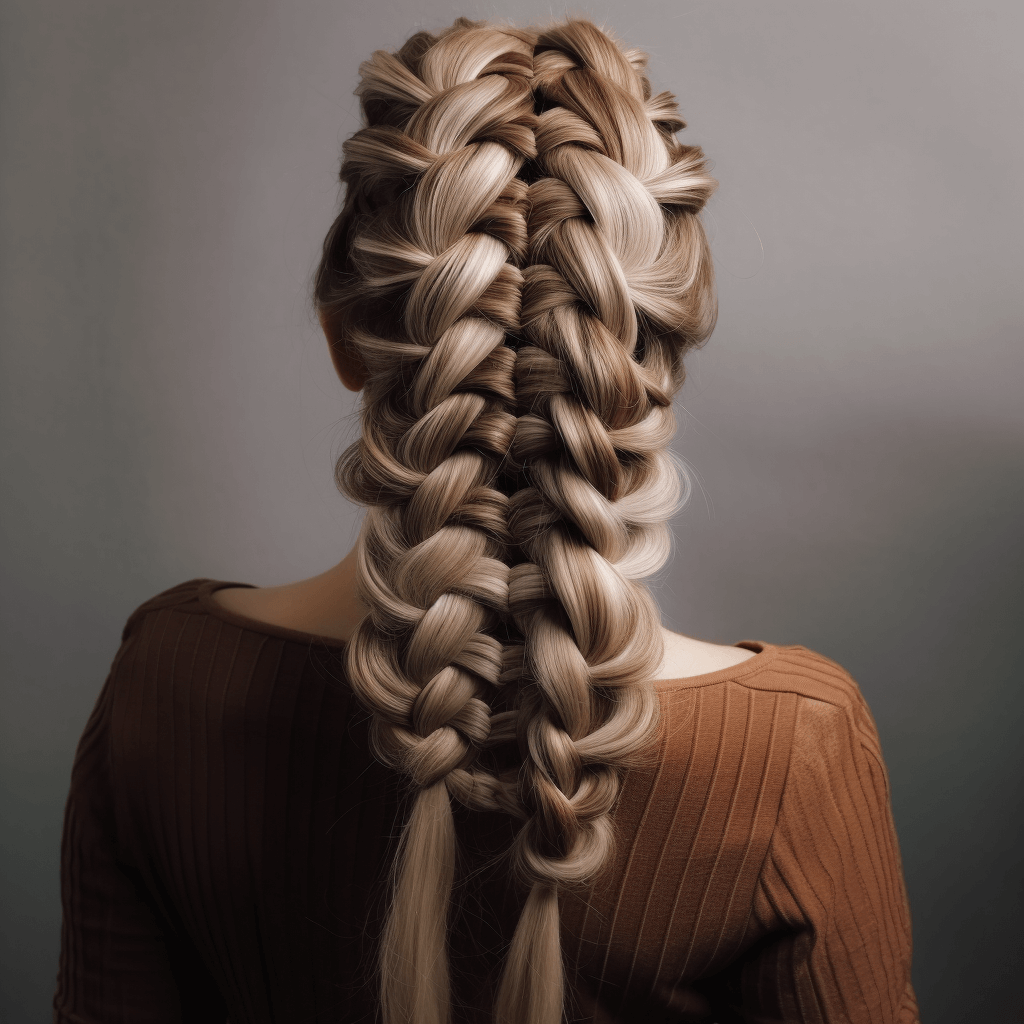
Origin & History: The Pancaked Braid is essentially a braid that is gently pulled apart to give it a flatter, more voluminous look – resembling a pancake.
Popularity: This style is immensely popular among those who prefer a fuller look to their braids, especially beneficial for those with thin hair.
Culture: Being a technique rather than a distinct style, pancaking can be applied to various braids across cultures, making it universally adopted.
Difficulty Level: Intermediate. While braiding might be straightforward, the key lies in gently pulling apart the braid without undoing it.
32. Braided Updo
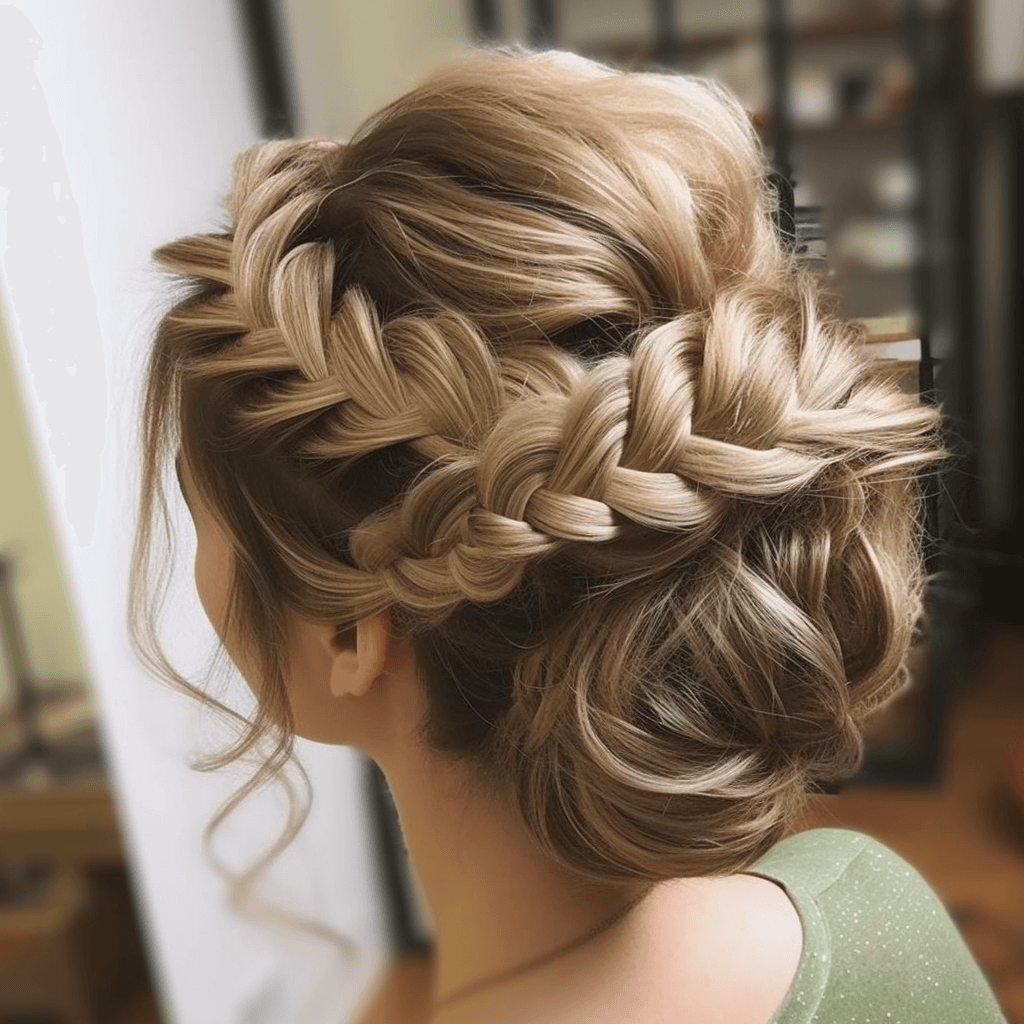
Origin & History: The Braided Updo is a classic, marrying the elegance of an updo with the intricate beauty of braids.
Popularity: Timeless in its appeal, it’s a preferred style for weddings, proms, and other formal occasions.
Culture: Across the world, various cultures have their versions of the Braided Updo, making it a globally cherished hairstyle.
Difficulty Level: Intermediate to Advanced. While some updos can be simple, combining them with intricate braids can be quite challenging.
33. Goddess Braids
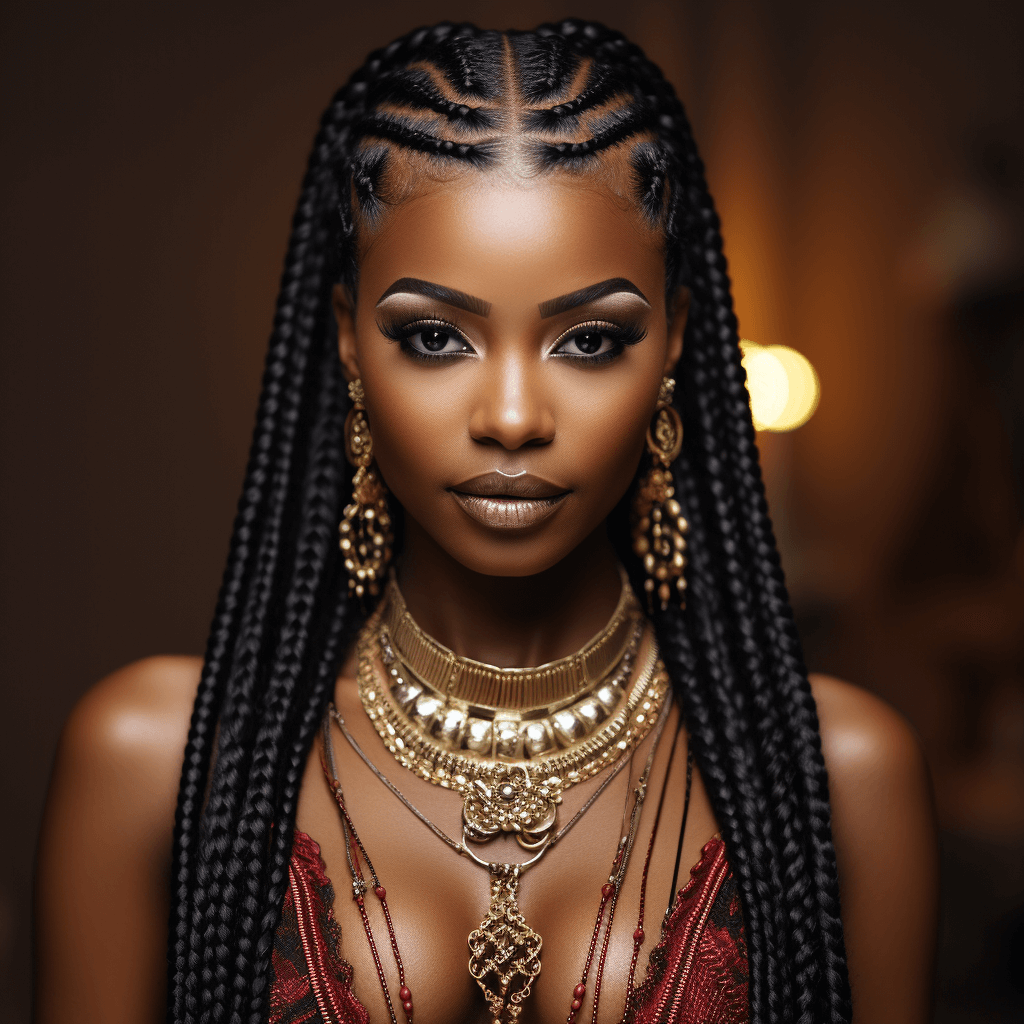
Origin & History: Goddess Braids are oversized, cornrow-like braids. They have African origins, and they’ve been a significant part of African American hair culture for many years.
Popularity: These braids have gained immense popularity not only for their protective nature but also for their stylish and bold statement.
Culture: Primarily rooted in African and African American culture, they’re seen as a celebration of natural hair and heritage.
Difficulty Level: Intermediate. The technique is similar to cornrowing, but the size and design can add complexity.
34. Knotless Braids
Origin & History: Knotless Braids are a contemporary variation of box braids. Unlike traditional box braids, they start without a knot, resulting in a more seamless and pain-free experience.
Popularity: With influencers and celebrities donning this style, it’s becoming increasingly popular due to its less painful installation and natural appearance.
Culture: Rooted in African and African American hair culture, it’s a modern twist to traditional protective hairstyles.
Difficulty Level: Intermediate. The absence of the knot can be challenging, but the end result is worth the effort.
35. Bohemian Braids
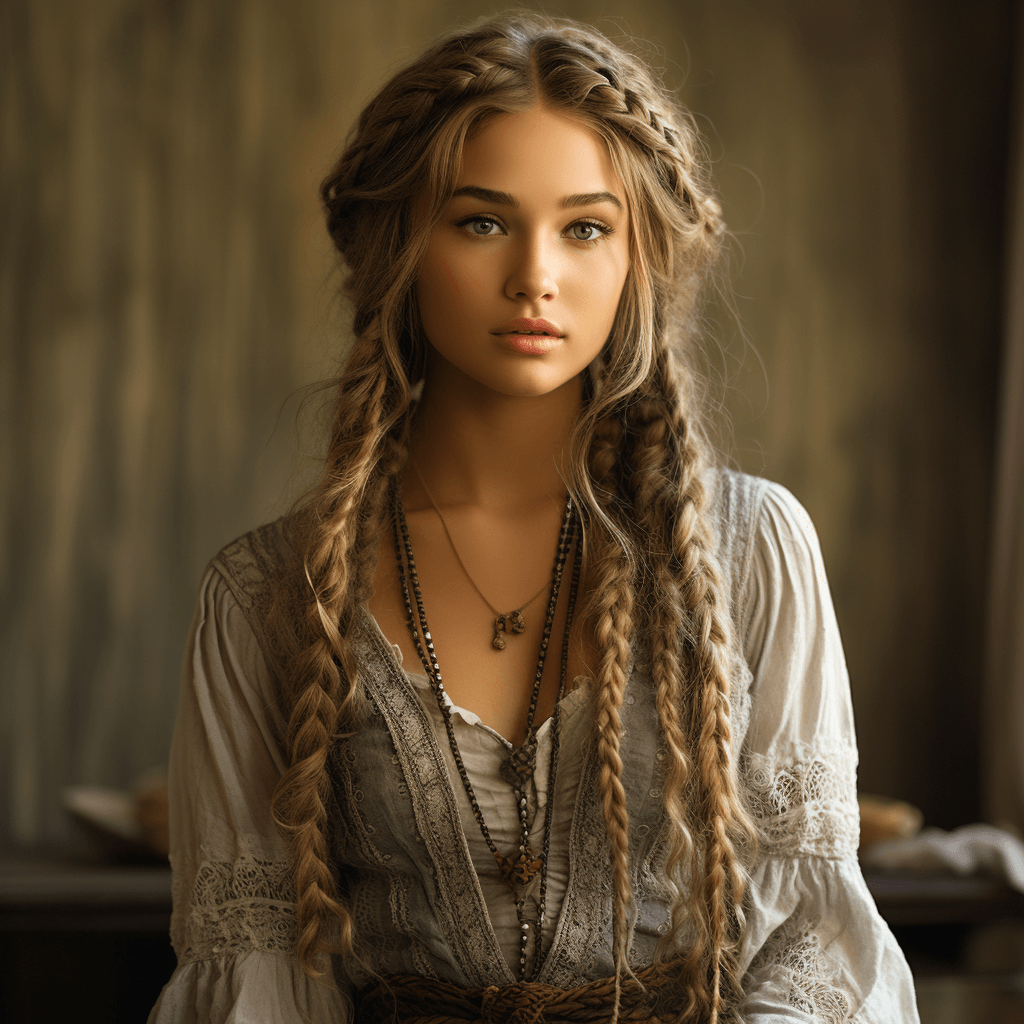
Origin & History: Drawing inspiration from the free-spirited Bohemian culture, Bohemian Braids have a relaxed and messy look.
Popularity: Particularly loved by festival-goers, these braids encapsulate a carefree aesthetic.
Culture: While they draw their name from the Bohemian movement, they have become a universal style representing a relaxed and natural vibe.
Difficulty Level: Easy to Intermediate. The style aims for an effortless look, so perfection isn’t the goal here.
36. French Rope Braid
Origin & History: A sophisticated spin on the classic rope twist, the French Rope Braid combines elements of the French braid and rope braid.
Popularity: Ideal for events that require a touch of elegance, it’s a go-to for many looking to step up their braid game.
Culture: A fusion of different braid cultures, it’s universally adopted and doesn’t tie to one particular region.
Difficulty Level: Advanced. It combines the intricacies of both the French braid and the rope twist.
37. Braid Hawk
Origin & History: The Braid Hawk is a fusion of the punk-rock mohawk and classic braiding, bringing together edge and tradition.
Popularity: With its unique and rebellious vibe, it’s a favorite for those seeking a hairstyle that stands out.
Culture: While mohawks have punk rock roots, braiding spans various cultures. The blend of these elements creates a versatile and global appeal.
Difficulty Level: Intermediate. It requires some skill to create the raised braid effect typical of a mohawk.
38. Yarn Braids
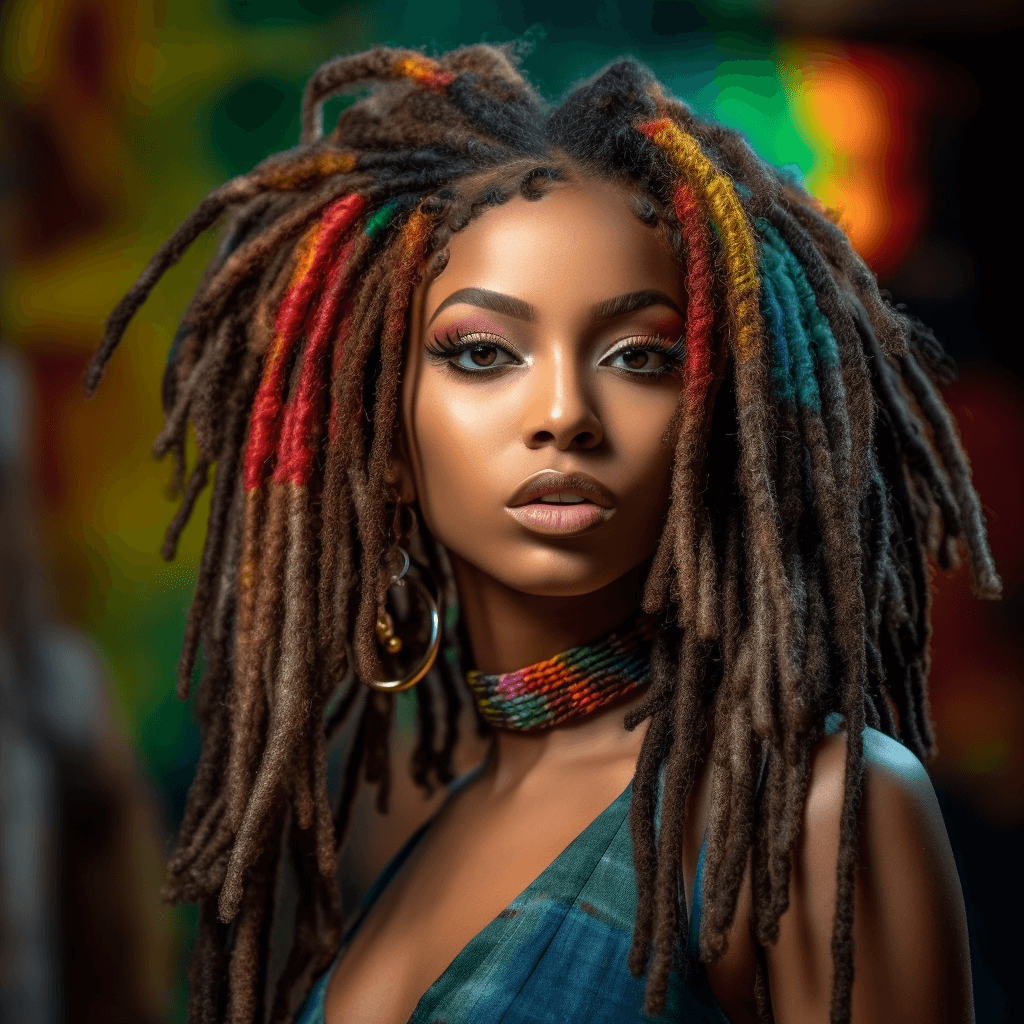
Origin & History: Yarn braids, as the name suggests, utilize colorful yarn instead of hair extensions. It’s a modern and playful take on traditional braids.
Popularity: Loved for their versatility and the burst of color they bring, many adore the protective benefits they offer to natural hair.
Culture: Although yarn braids can be seen worldwide, they hold particular significance in African and African American hair culture as a protective style.
Difficulty Level: Intermediate. The process is similar to traditional braiding but involves the added layer of incorporating yarn.
39. Senegalese Twists
Origin & History: Originating from Senegal, West Africa, these twists are a popular protective hairstyle.
Popularity: Senegalese Twists are loved for their sleek appearance and the minimal tension they place on the scalp compared to other protective styles.
Culture: Deeply rooted in West African culture, they have since gained popularity around the world, especially within African American communities.
Difficulty Level: Intermediate. The twisting method can be a bit challenging for beginners but becomes easier with practice.
40. Faux Locs
Origin & History: Faux Locs provide the look of dreadlocks without the long-term commitment. They’re a relatively modern innovation in the realm of protective hairstyles.
Popularity: With celebrities like Rihanna and Zendaya showcasing this style, its popularity has skyrocketed in recent years.
Culture: While dreadlocks have roots in various cultures, from the Rastafarians of Jamaica to the Maasai of East Africa, Faux Locs are a global take on this ancient style.
Difficulty Level: Advanced. Installing faux locs can be time-consuming and requires a good grasp of braiding and wrapping techniques.
41. Lemonade Braids
Origin & History: These side-swept braids gained enormous popularity after Beyoncé’s visual album “Lemonade”, hence the name.
Popularity: With the Beyoncé seal of approval, Lemonade Braids quickly became one of the most sought-after braiding styles.
Culture: While the side-swept style can be traced back to ancient African braiding traditions, it has been redefined in pop culture, especially within the African American community.
Difficulty Level: Intermediate. It requires a steady hand and a bit of patience, especially if they’re being intricately designed.
42. Ghana Braids
Origin & History: Ghana braids, also known as banana braids, have roots in Africa, specifically in the country of Ghana.
Popularity: Celebrated for their intricate patterns and designs, these braids have been embraced globally.
Culture: As one of the traditional hairstyles in Africa, they carry deep cultural significance and are often seen in various ceremonies and festivities.
Difficulty Level: Advanced. The detailed and tight patterns demand expertise and experience.
43. Passion Twists
Origin & History: A relatively new addition to the world of protective styles, Passion Twists were created by Miami-based hairstylist Kailyn Rogers.
Popularity: They’ve quickly become a favorite due to their bohemian vibe and easy maintenance.
Culture: Even though they’re a modern invention, Passion Twists draw inspiration from traditional African braiding techniques.
Difficulty Level: Intermediate. While not overly complicated, achieving the soft and springy twist requires some practice.
44. Fulani Braids
Origin & History: Named after the Fulani people of West Africa, these braids are distinguished by their unique pattern and the inclusion of beads.
Popularity: Their striking design, combined with cultural significance, has led to global admiration.
Culture: Fulani Braids are deeply embedded in the culture of the Fulani people and are worn as a symbol of identity, status, and beauty.
Difficulty Level: Intermediate to Advanced. The design is intricate and often includes additional embellishments like beads and gold cuffs.
45. Feed-In Braids
Origin & History: Feed-in braids, also known as no-knot braids, have their roots in traditional African hairstyling. They differ from regular braids by starting with a small section and gradually feeding in more hair as the braid progresses.
Popularity: Due to their natural and less bulky appearance at the hairline, they have gained popularity worldwide.
Culture: These braids, while modern in execution, draw from ancient African braiding techniques, making them both traditional and contemporary.
Difficulty Level: Intermediate. The technique of feeding hair into the braids requires practice to master.
46. Banana Braids
Origin & History: These are often used interchangeably with Ghana braids and have roots in Africa.
Popularity: They’ve remained consistently popular for decades, given their protective nature and appealing aesthetic.
Culture: These braids are culturally significant in many African communities, serving both functional and aesthetic purposes.
Difficulty Level: Advanced. The intricate patterns of Banana braids demand a skilled hand.
47. Peekaboo Braid
Origin & History: The Peekaboo Braid is a modern hairstyle where braids are hidden beneath layers of hair, offering a ‘peekaboo’ effect.
Popularity: It’s a favorite among those who desire a subtler take on the braided look.
Culture: This style doesn’t have deep cultural roots but is more of a fashionable, contemporary choice.
Difficulty Level: Intermediate. While the braiding itself isn’t overly complicated, strategically placing them requires planning.
48. Crown Rope Twist Braid
Origin & History: An evolution of the crown braid, the rope twist version offers a tighter, more defined look.
Popularity: Crown braids have always been in vogue, and the rope twist variation offers a fresh spin on a classic style.
Culture: While crown braids can be traced back to ancient civilizations across the globe, the rope twist version is a more modern iteration.
Difficulty Level: Intermediate. Achieving the twist and ensuring it wraps neatly around the head can be challenging.
49. Side Braid
Origin & History: The side braid, as simple as it sounds, has ancient origins and has been depicted in art from various cultures around the world.
Popularity: Due to its simplicity and elegance, the side braid has never truly gone out of style and remains a go-to for many.
Culture: From ancient European to Asian civilizations, the side braid has been a hairstyle of choice for centuries.
Difficulty Level: Beginner. One of the easiest braids to master, perfect for those new to braiding.
50. Reverse French Braid
Origin & History: This is essentially an inside-out version of the traditional French braid.
Popularity: For those looking for a variation of the popular French braid, the reverse French braid provides a unique texture and standout appearance.
Culture: Like the French braid, its origins are disputed. While it’s named “French,” some believe it originated in North Africa. The reverse style is a modern twist on this age-old braid.
Difficulty Level: Intermediate. The technique is similar to the French braid but requires flipping one’s hand positioning.
In the ever-evolving world of hairstyling, braids have stood the test of time, showcasing both cultural significance and artistic flair. From the simple elegance of the Classic Three-Strand Braid to the intricate detailing of the Lace Braid, there’s a style for every occasion and personality. If you’re looking to diversify your hair game, delve deeper into our comprehensive guide on 50 types of hairstyles. With organic techniques and natural variations, this article offers a myriad of options for those eager to expand their hair repertoire.
Frequently Asked Questions
What is the history behind braided hairstyles?
Braided hairstyles have a rich and diverse history that spans across various cultures and continents. From the intricate cornrows of Africa, which not only served as a hairstyle but also a symbol of one’s age, social status, and tribal affiliation, to the simpler braids of ancient Europe used to depict marital status and societal roles, braiding has always been more than just a style—it’s been a form of expression and identity. Ancient civilizations like the Egyptians also used braids, often adorned with gold and jewels, to showcase wealth and power.
How do I maintain and take care of my braids?
Maintaining braids requires consistent care to ensure they remain neat and healthy. First, always keep your scalp clean by using a mild shampoo or a diluted solution, carefully washing without rigorous scrubbing. Apply a leave-in conditioner to keep your braids moisturized. It’s also advisable to wear a silk or satin scarf or bonnet at night to reduce friction and prevent frizz. Avoid pulling or tugging at your braids, and keep them away from heat and chemicals to prevent damage.
Which braid style is most suitable for shorter hair lengths?
For shorter hair lengths, styles like cornrows, box braids with extensions, and the classic three-strand braid are ideal choices. The crown braid and halo braid can also work well for medium-length hair. It’s essential to ensure that the hair is long enough to be secured in the braid, but many braided styles can be adapted to accommodate shorter lengths.
Can braids help in promoting hair growth?
Braids can be a protective hairstyle, meaning they shield the hair from environmental damage, excessive heat, and other stressors. When your hair is in a braided style, the ends are tucked away, reducing the risk of breakage and split ends. However, it’s crucial to note that braids themselves don’t stimulate hair growth. Instead, they help retain length by minimizing damage. But remember, braids that are too tight or left in for extended periods can cause hair damage and even lead to hair loss.
How long do braids typically last?
The longevity of braids varies based on the type of braid, how they are maintained, and individual hair characteristics. Generally, braids like cornrows or box braids can last anywhere from 4-8 weeks. However, it’s essential to give your hair and scalp a break between braid installations to prevent stress and potential damage to the hair follicles.
Is there a difference between braids and twists?
Yes, there is a significant difference between braids and twists. Braids typically involve interweaving three or more strands of hair, whereas twists involve only two sections. When twisting, the two sections are wrapped around one another until the end. Twists, like Senegalese or passion twists, generally have a more rounded appearance, while braids can have a flatter look. Both styles can be protective and offer a variety of design possibilities.
What’s the best way to manage pain or discomfort after getting braids?
If you experience discomfort after getting your hair braided, it might be because the braids are installed too tightly. While some tightness is normal immediately after braiding, prolonged pain isn’t. To manage discomfort, you can apply a cold compress to sore areas or use over-the-counter pain relievers. Applying a soothing oil or serum can also provide relief. If the pain persists or if you notice bumps, redness, or hair loss, it’s essential to remove the braids and consult with a hairstylist or dermatologist.
How do braids fare in different weather conditions?
Braids are versatile and can withstand various weather conditions. In hot and humid climates, braids can help keep hair protected and minimize frizz. In colder conditions, they shield the hair from dry air and potential breakage. However, it’s essential to ensure your hair remains moisturized regardless of the weather. Using a hydrating spray or oil can help maintain the hair’s health and the braid’s longevity.
Can I swim with braided hair?
Yes, you can swim with braided hair. However, it’s advisable to wear a swim cap to reduce exposure to chlorine or saltwater, which can dry out and damage your hair. If you do swim without a cap, it’s essential to rinse your hair thoroughly afterward and apply a deep conditioner to counteract any drying effects from the pool or sea water.
How do I prevent frizz and keep my braids looking fresh?
Keeping braids looking fresh involves daily maintenance. To prevent frizz, always cover your braids with a silk or satin scarf or bonnet at night. Using a braid spray or light oil can also help maintain their shine and moisture. Furthermore, avoid excessive manipulation or constant readjusting of the braids. If you notice flyaways or small hairs sticking out, a light gel or mousse can be applied to smooth them down.

